During assembly and closing of nets following must be kept in mind:
1. Solid fine-meshed net fabric.
Meshes of net have to be fixed and must not be shiftable
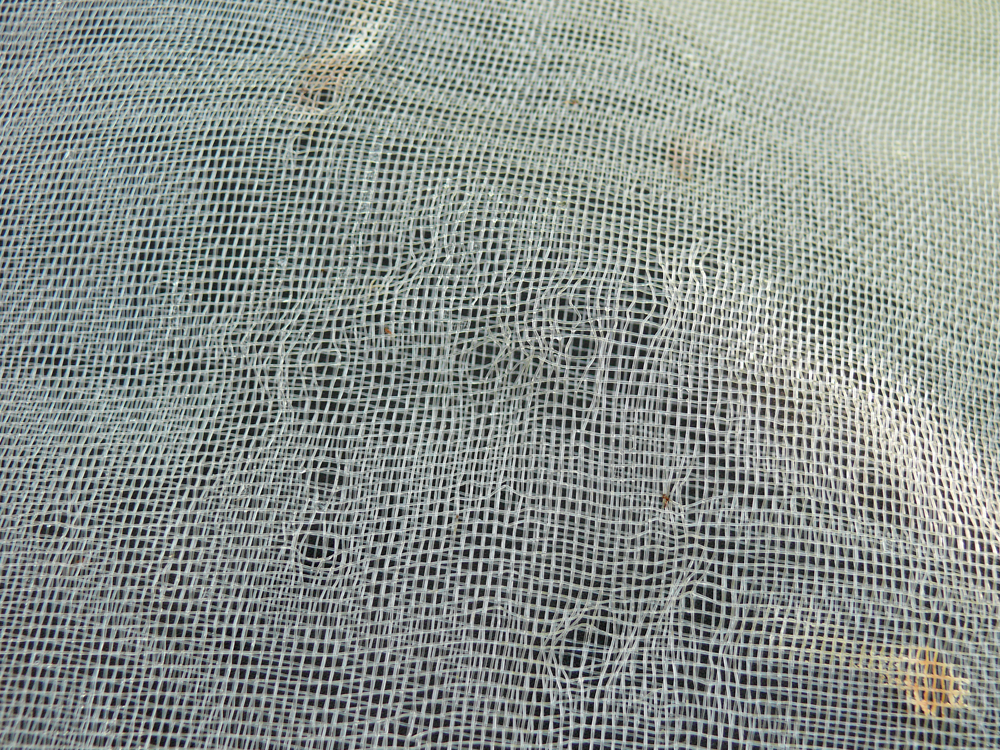 | 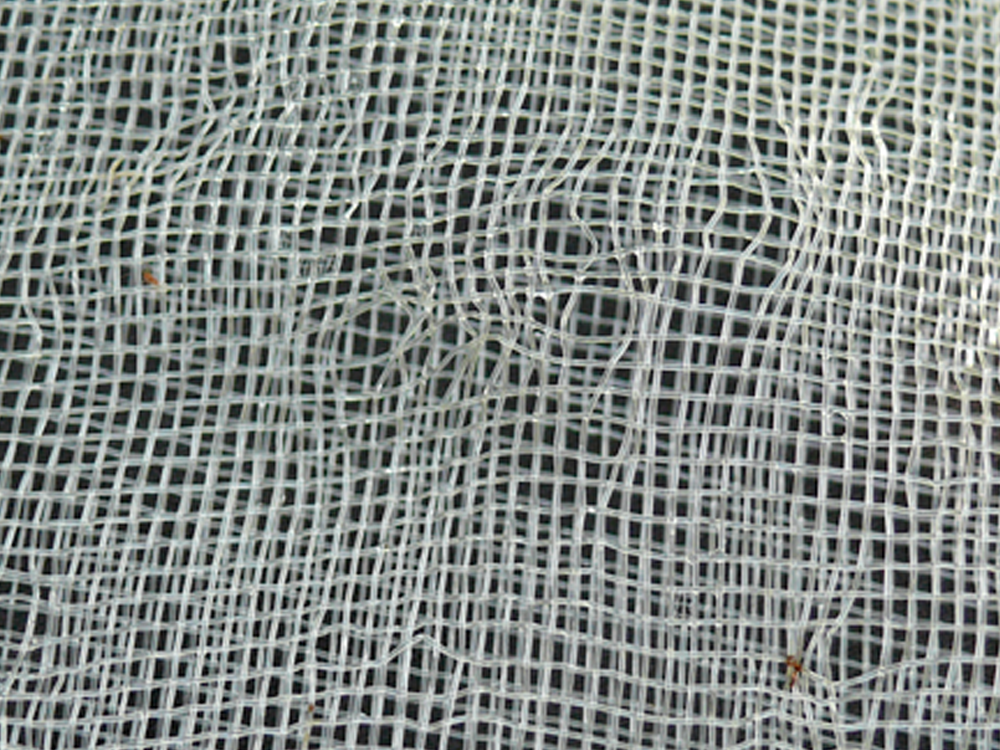 |
Unsuitable net - The mesh of net have to be glued or welded so that the mesh could not be relocated
(© H. Vogt, JKI Dossenheim) |
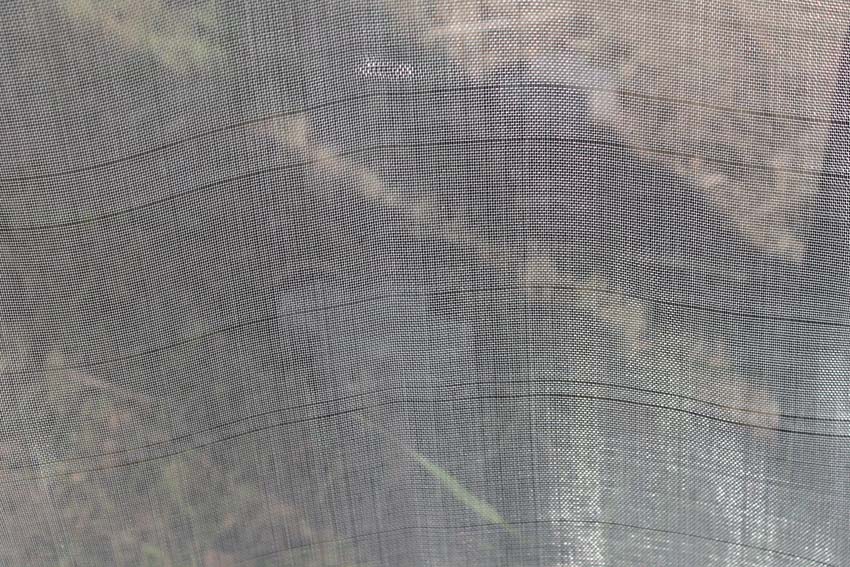 | 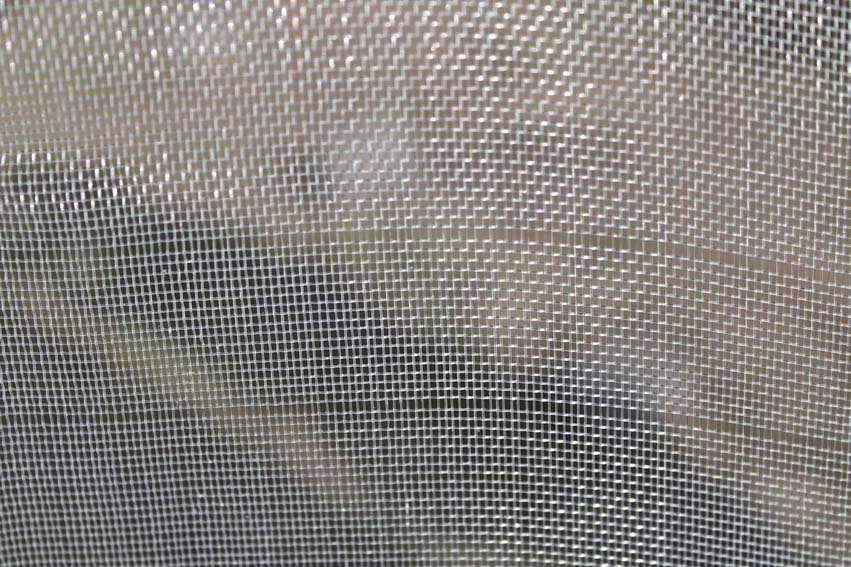 |
| It needs to be checked that the mesh of the net is welded uniformly (© B. Boehnke, JKI Dossenheim) |
2. Punctual closing of exclusion netting
With changing of fruit color, Spotted Wing Drosophila will be interested in fruit.
In cherries, also fruits of june fruit drop can shown infestation.
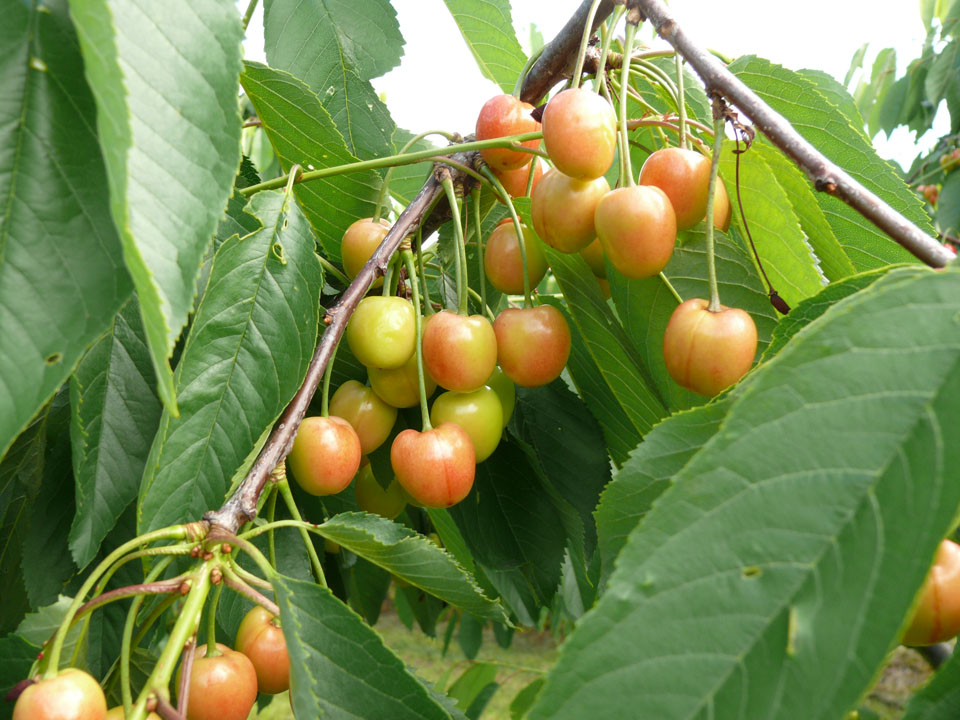 |  |
Color changing of cherries
(© H. Vogt, JKI Dossenheim) | Color changing of cherries
(© H. Vogt, JKI Dossenheim) |
 |  |
June fruit drop of cherries
(© B. Boehnke, JKI Dossenheim) | June fruit drop of cherries
(© B. Boehnke, JKI Dossenheim) |
 | 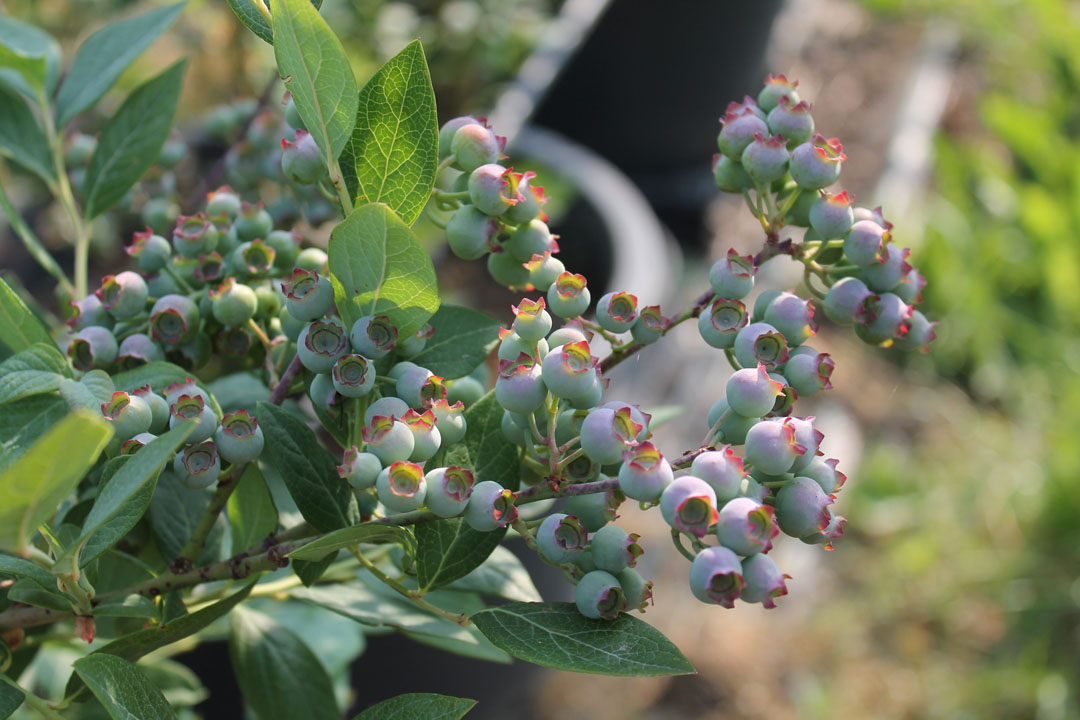 |
Color changing of blueberries
(© B. Boehnke, JKI Dossenheim) | Color changing of blueberries
(© B. Boehnke, JKI Dossenheim) |
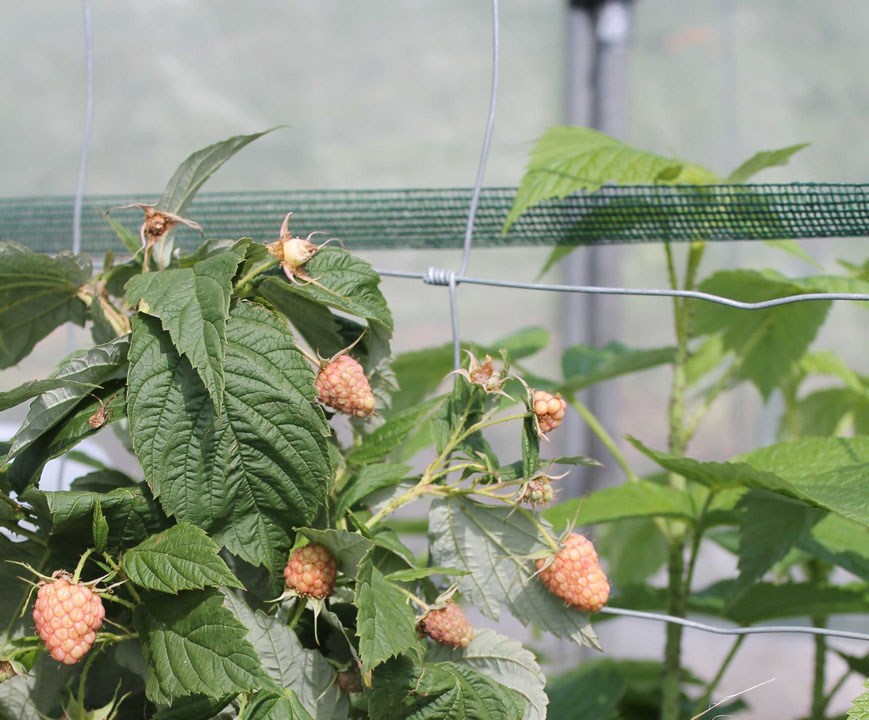 |  |
Color changing of raspberries
(© B. Boehnke, JKI Dossenheim) | Color changing of blackberries
(© B. Boehnke, JKI Dossenheim) |
3. Insertion of pollinators
If cherry culture will be closed early and especially in fruit crops with parallel growth of blossom
and fruits have to be inserted pollinators.
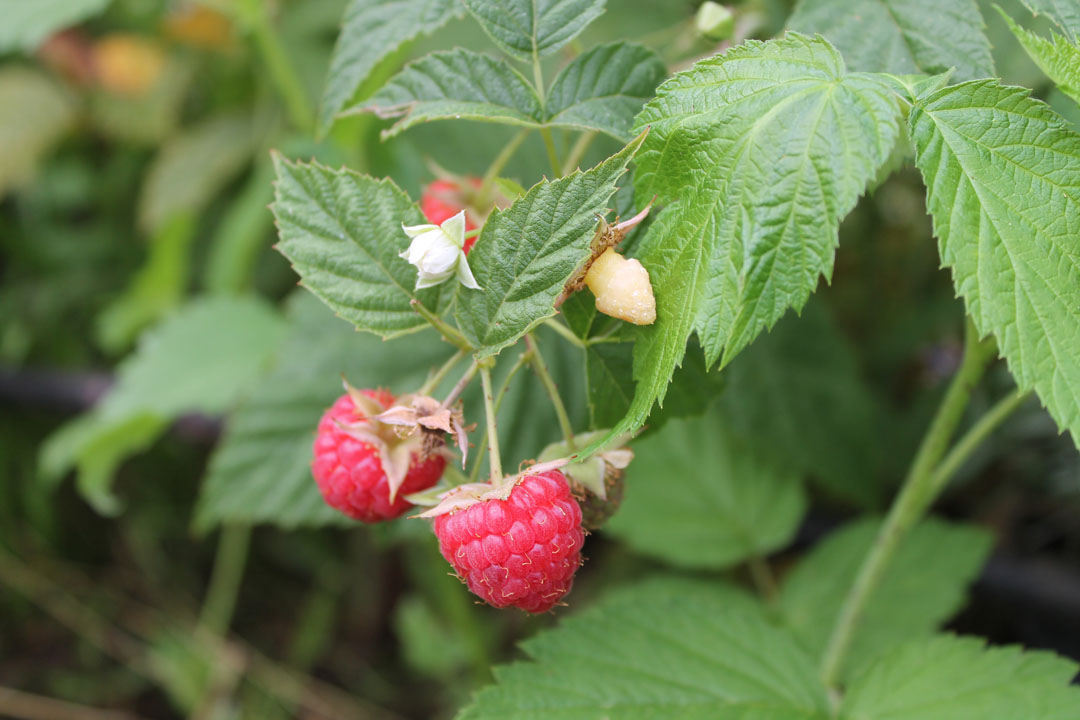 | 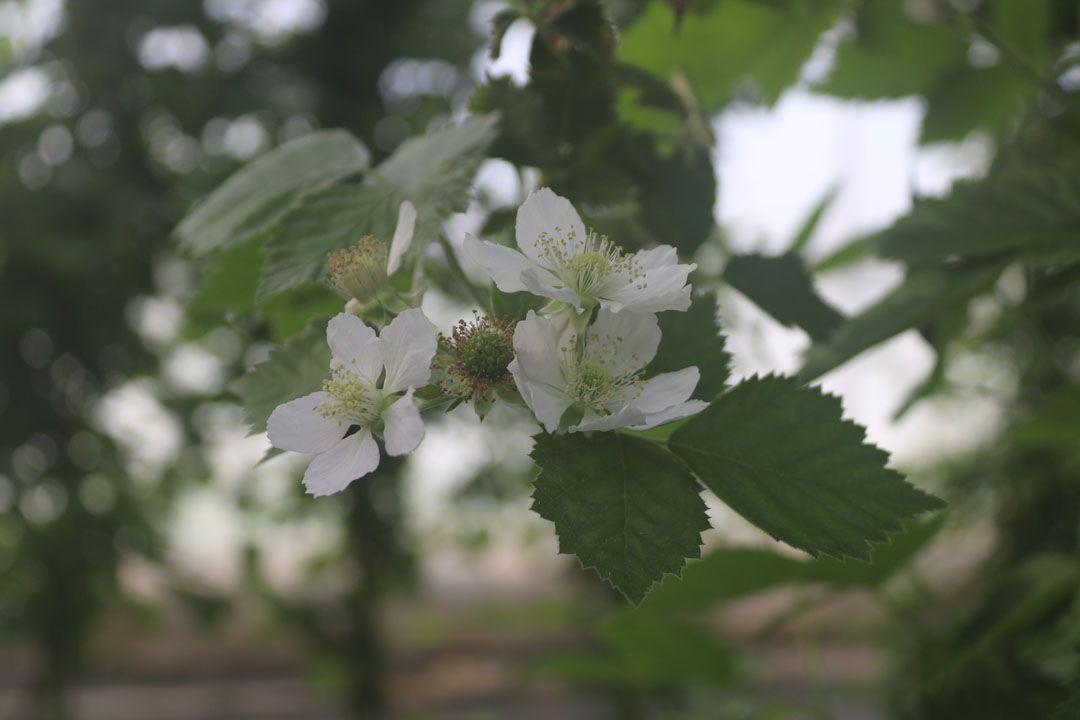 |
Parallel raspberry blossom and fruits
(© B. Boehnke, JKI Dossenheim) | Parallel blackberry blossom and fruits
(© B. Boehnke, JKI Dossenheim) |
Commercial pollination systems | |
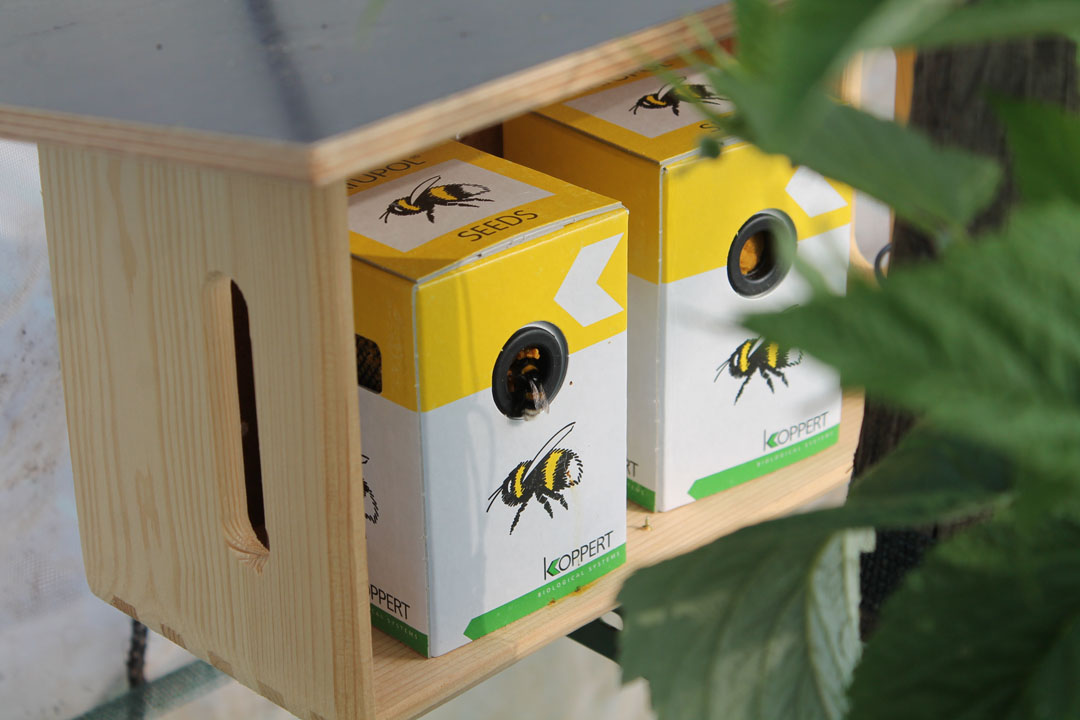 | 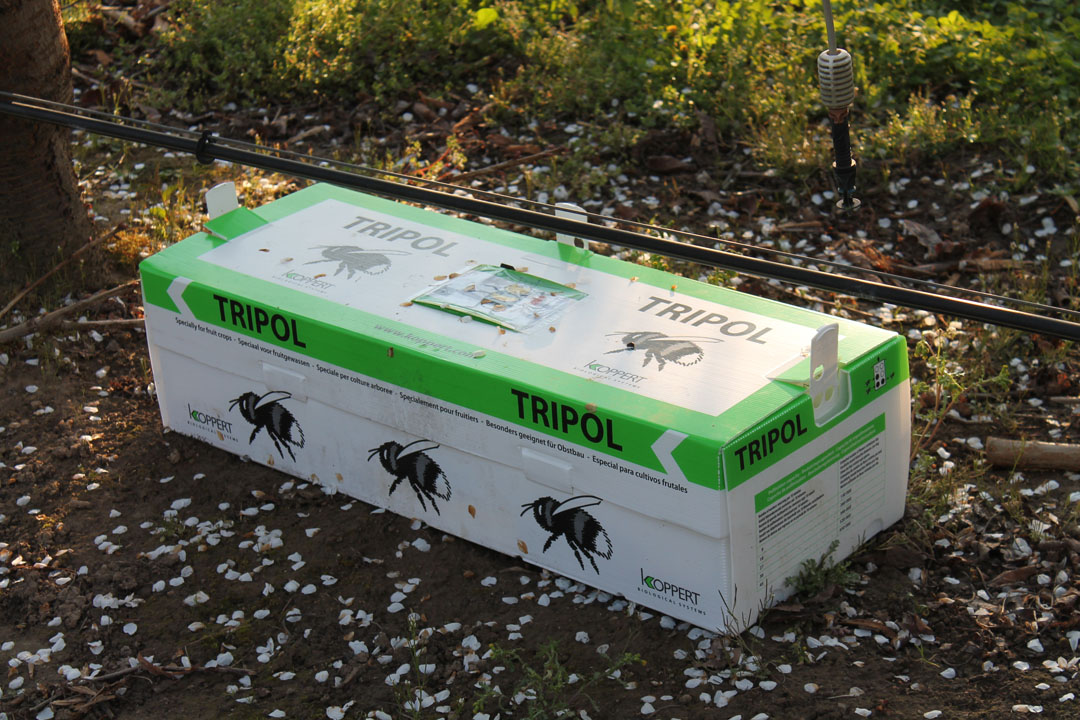 |
| Pollination system for small protected cultures (Bombus terrestris terrestris). Only workers. (© B. Boehnke, JKI Dossenheim) | Pollination system for big protected cultures (Bombus terrestris terrestris). Three bumblebee colonies.
(© B. Boehnke, JKI Dossenheim) |
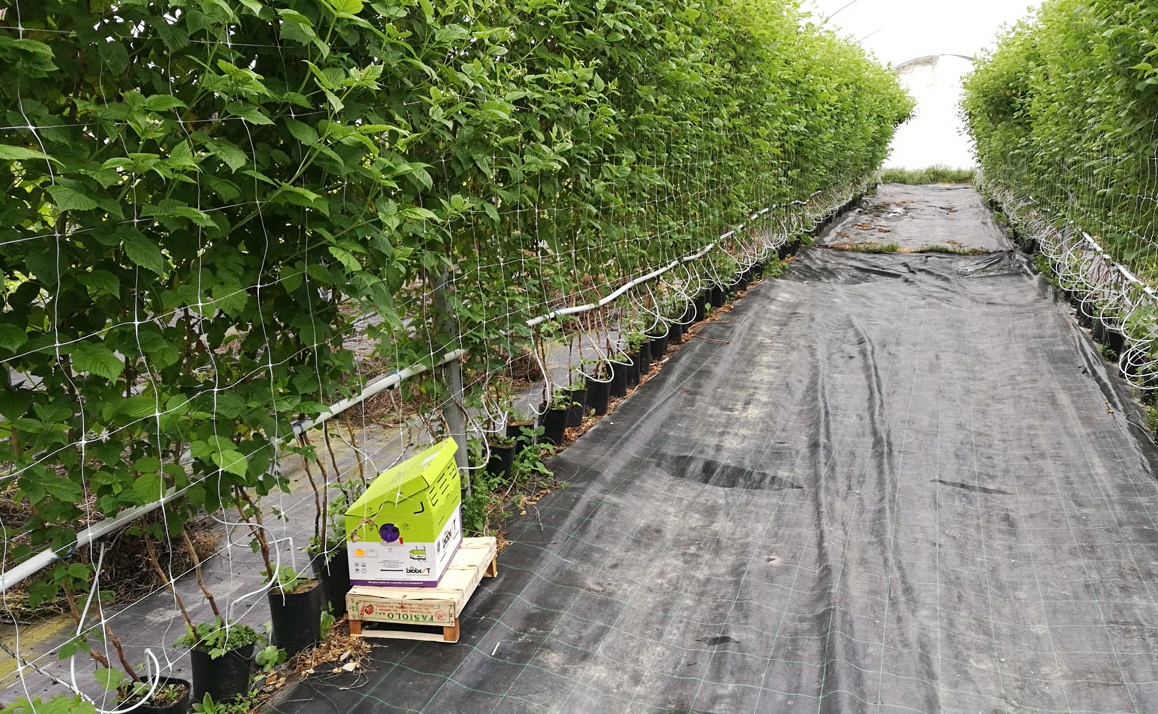 | 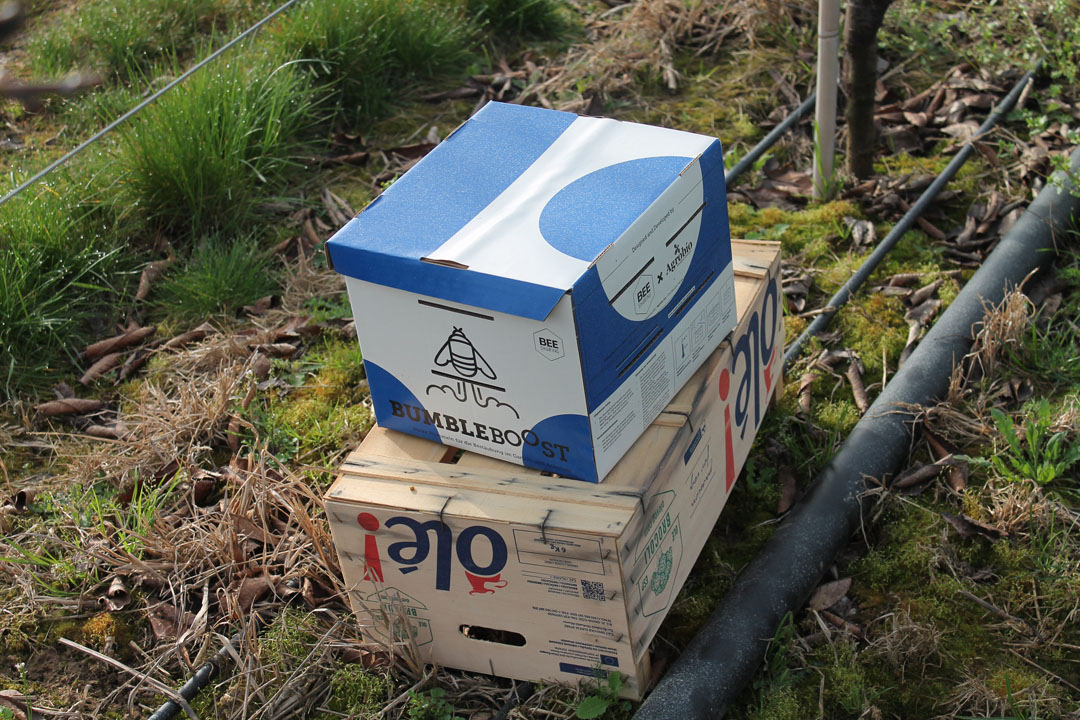 |
| Pollination system in protected culture (Bombus terrestris terrestris). One bumbleebee colony in a netted blackberry foil tunnel. (© B. Boehnke, JKI Dossenheim) | Pollination system in protected culture (Bombus terrestris terrestris). One bumbleebee colony in a netted cherry foil canopy. (© B. Boehnke, JKI Dossenheim) |
 |  |
Commercial masonry bee pollination system (Osmia sp.)
(© B. Boehnke, JKI Dossenheim) | Commercial masonry bee pollination system (Osmia sp.)
(© B. Boehnke, JKI Dossenheim) |
Settlement/ attracting of pollinators | |
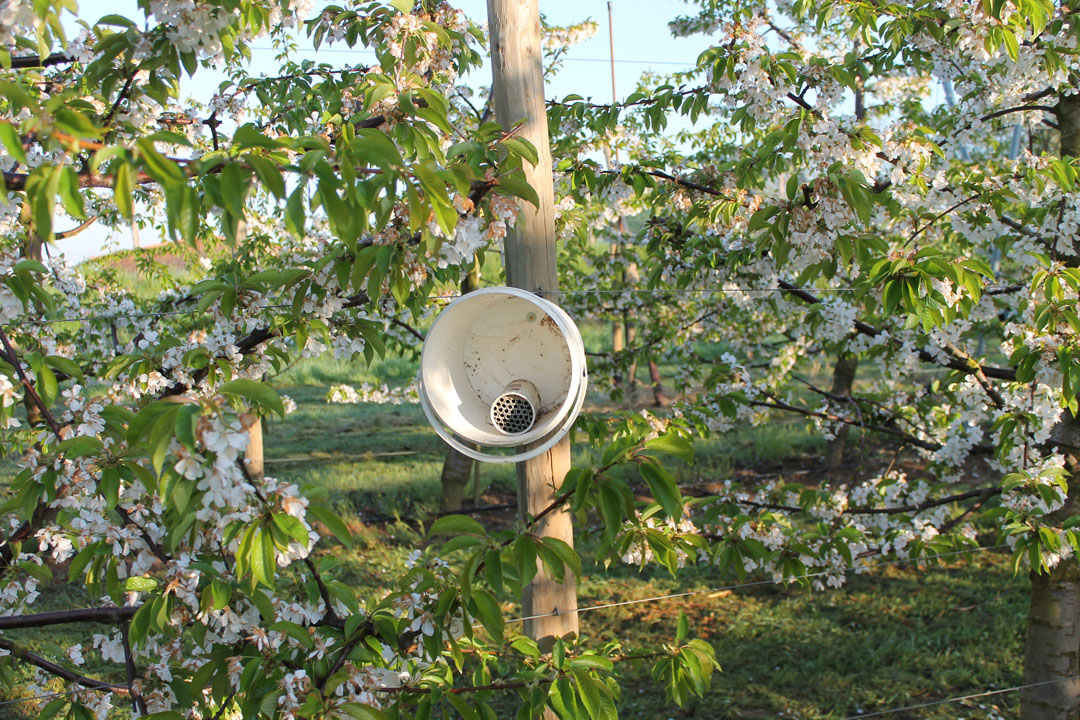 | 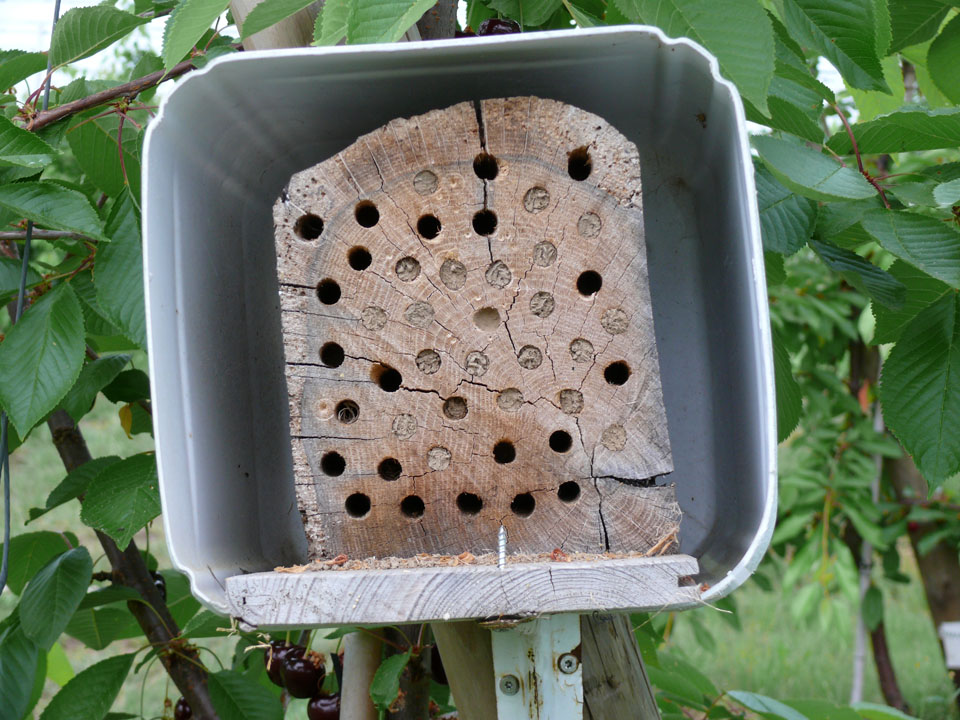 |
Attracting of masonry bees
(© B. Boehnke, JKI Dossenheim) | Attracting of masonry bees
(© H. Vogt, JKI Dossenheim) |
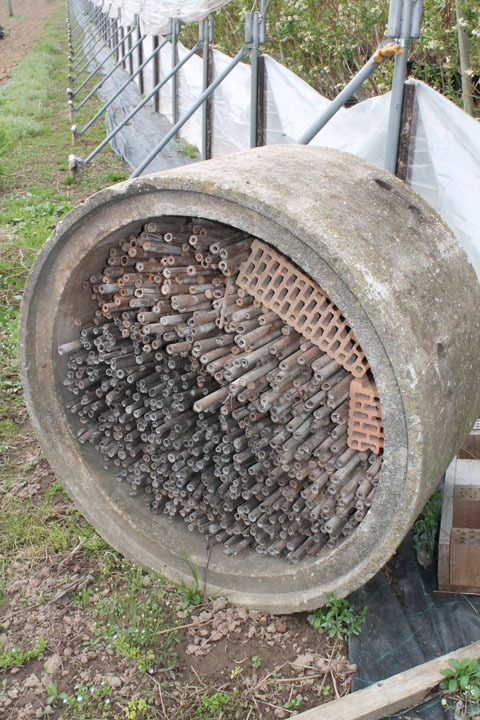 | 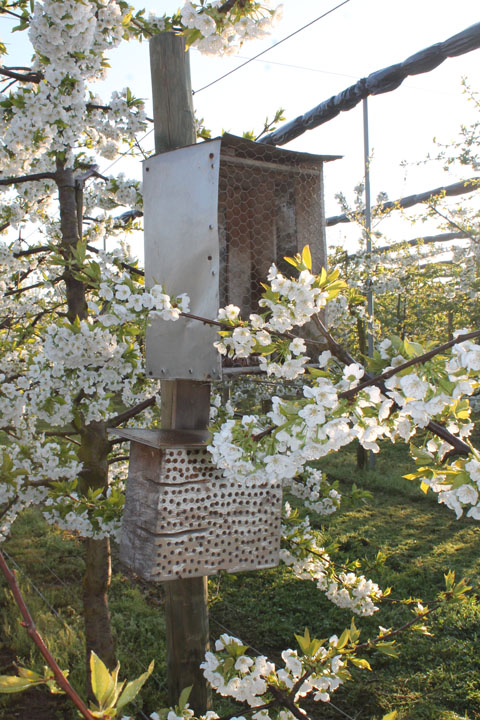 |
Attraction of masonry bees and beneficial insects
(© B. Boehnke, JKI Dossenheim) | Attraction of masonry bees and beneficial insects
(© B. Boehnke, JKI Dossenheim) |
4. All open areas have to be closed
To avoid entering of Spotted Wing Drosophila, all open areas have to be closed gapless with fine-meshed net (eaves, roof ventilation, lateral open areas and ventilation, entrance area)
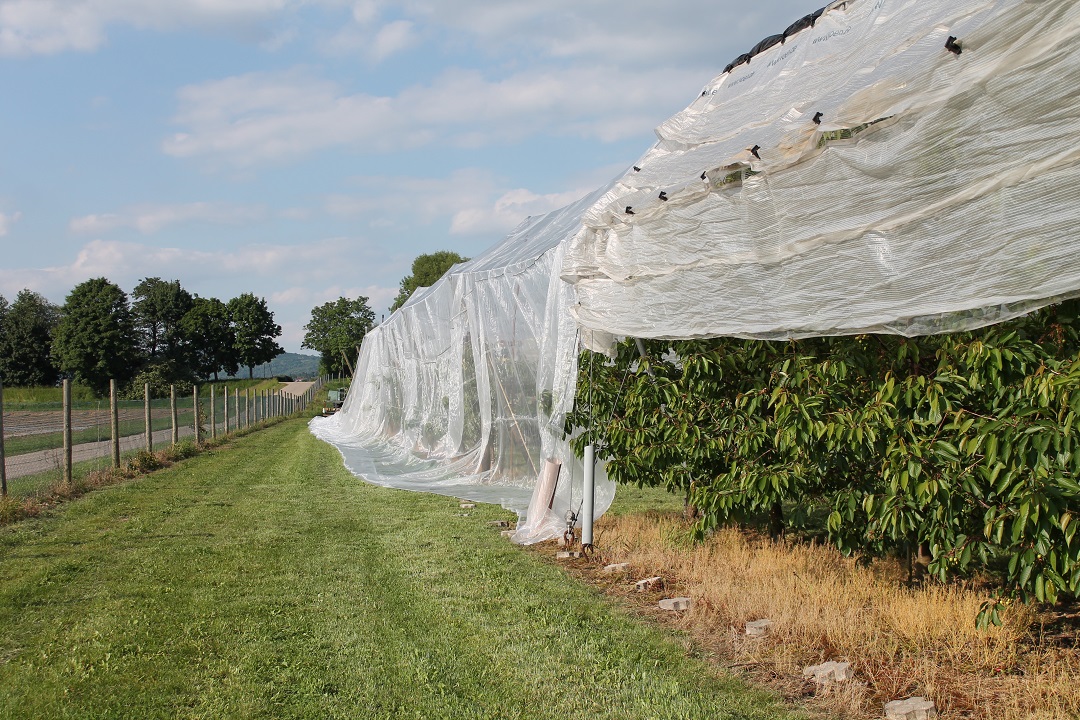 | 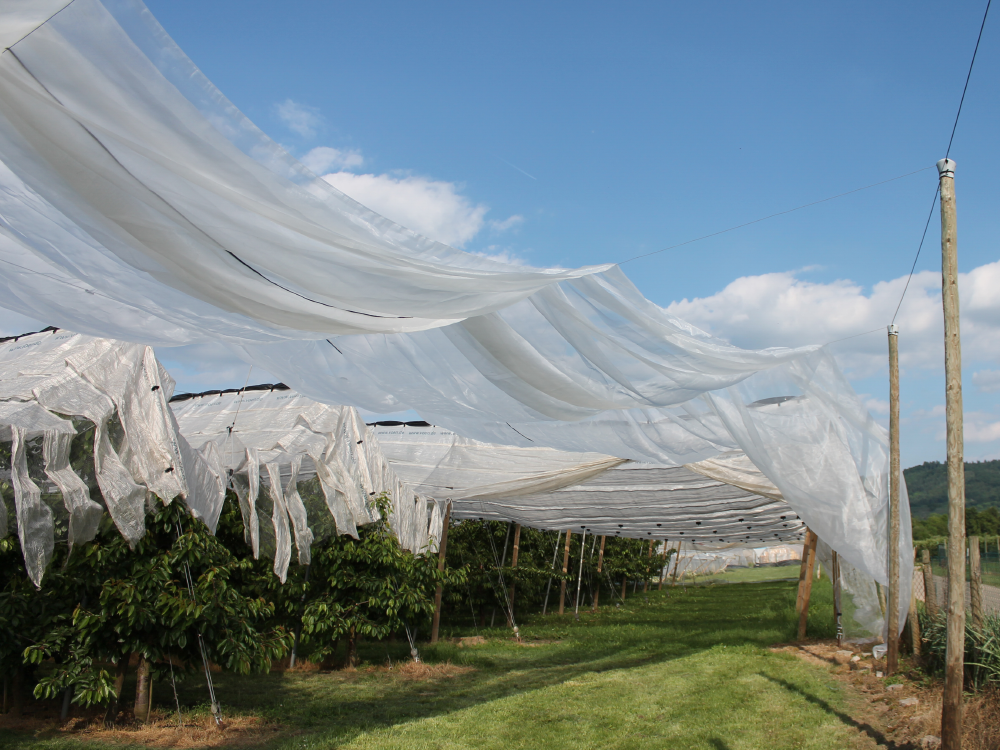 |
| Closing with net of lateral open area of a foil canopy in cherries (© B. Boehnke, JKI Dossenheim) | Exclusion netting of headland of a foil canopy in cherries (© B. Boehnke, JKI Dossenheim) |
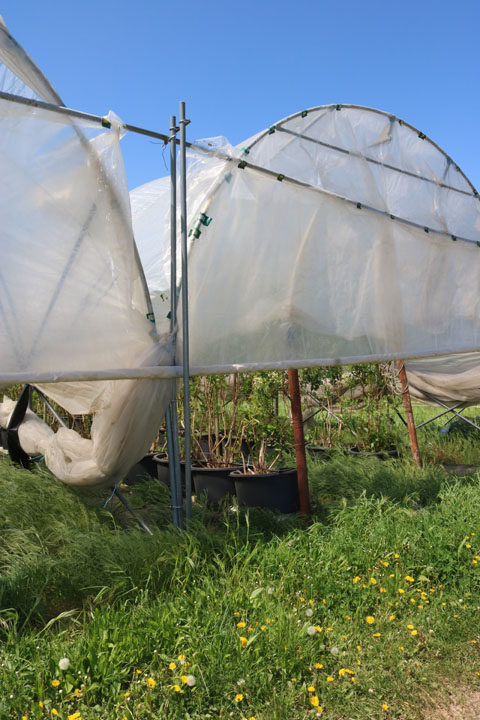 | 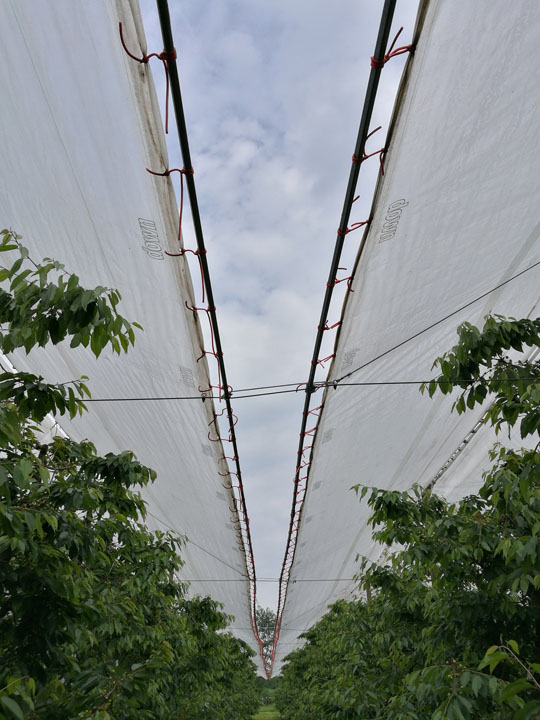 |
| Entrance areas of foil tunnels have to be closed with exclusion net (© B. Boehnke, JKI Dossenheim) | Open eaves areas have to be closed with fine-meshed exclusion net (© C. Augel, LTZ Augustenberg) |
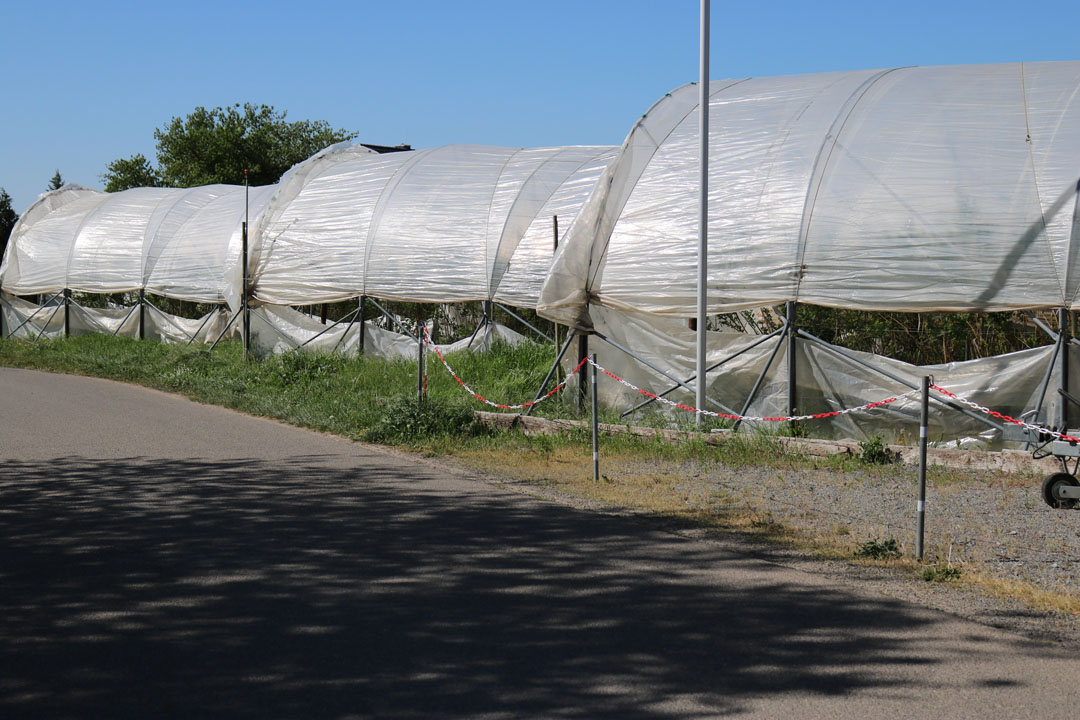 | 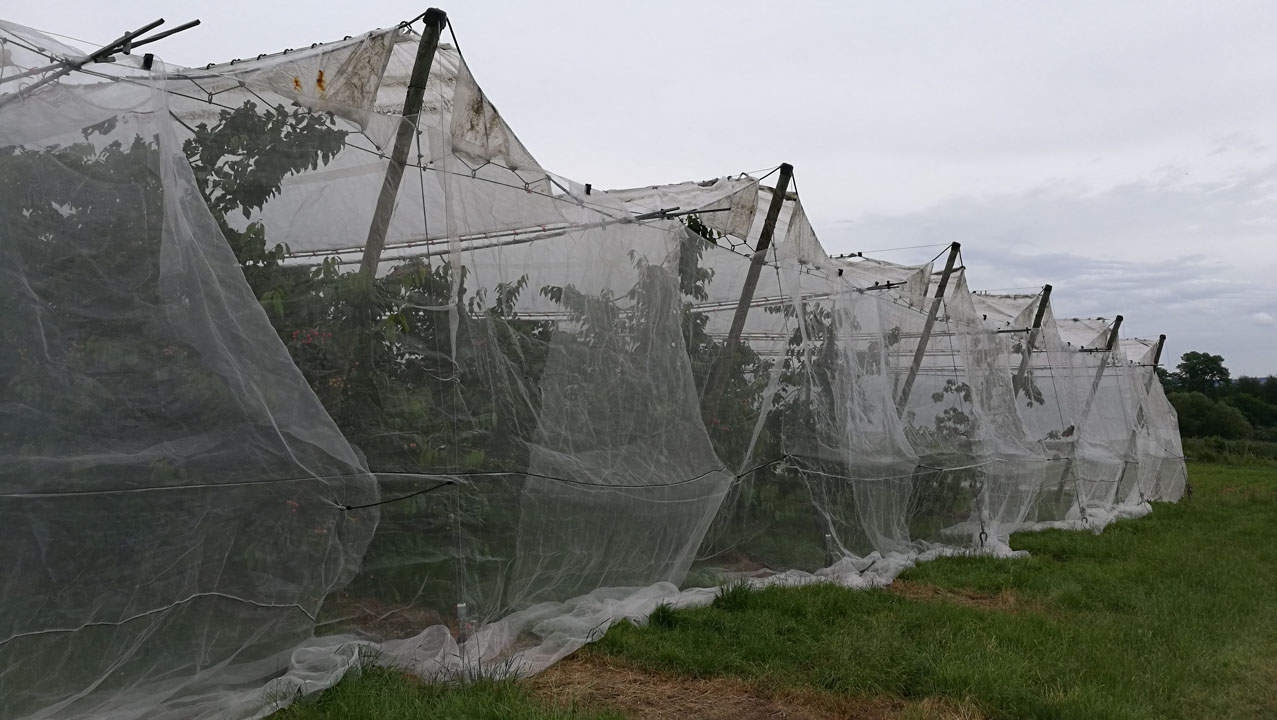 |
| Lateral ventilation systems of foil tunnels have to be closed with exclusion net (© B. Boehnke, JKI Dossen-heim) | Open foil-net connections have to be closed gapless with fine-meshd net (© C. Augel, LTZ Augustenberg) |
 | 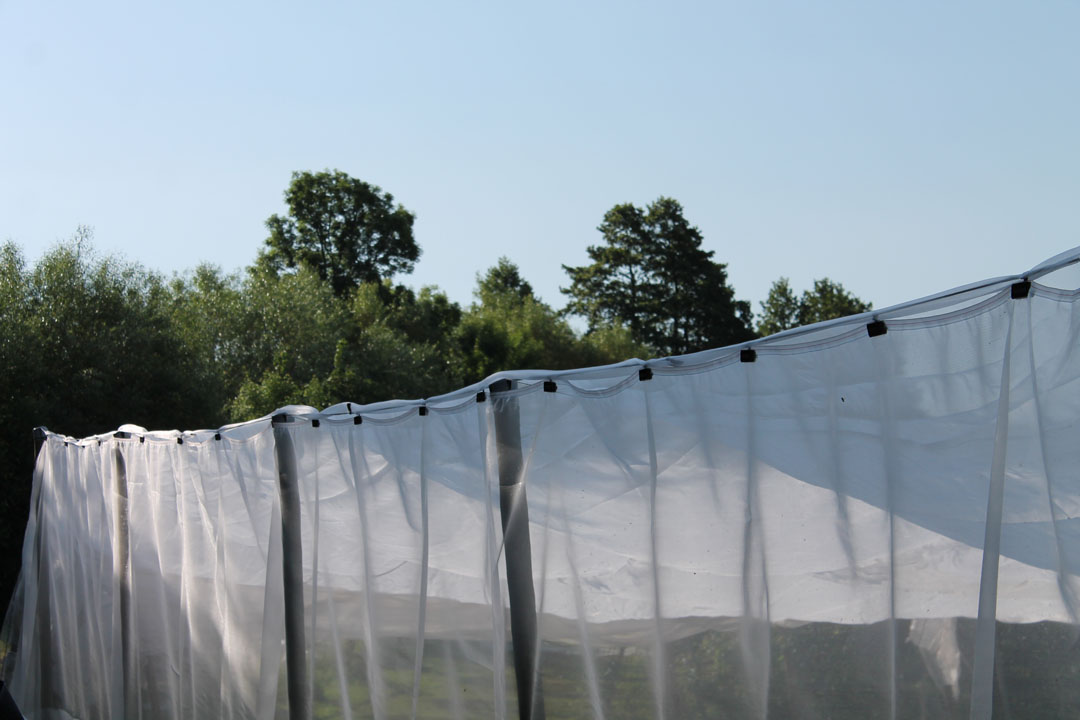 |
| Open foil-net connections have to be closed gapless with fine-meshd net (© B. Boehnke, JKI Dossenheim) | Open net connections have to be closed gapless with fine-meshd net (© B. Boehnke, JKI Dossenheim) |
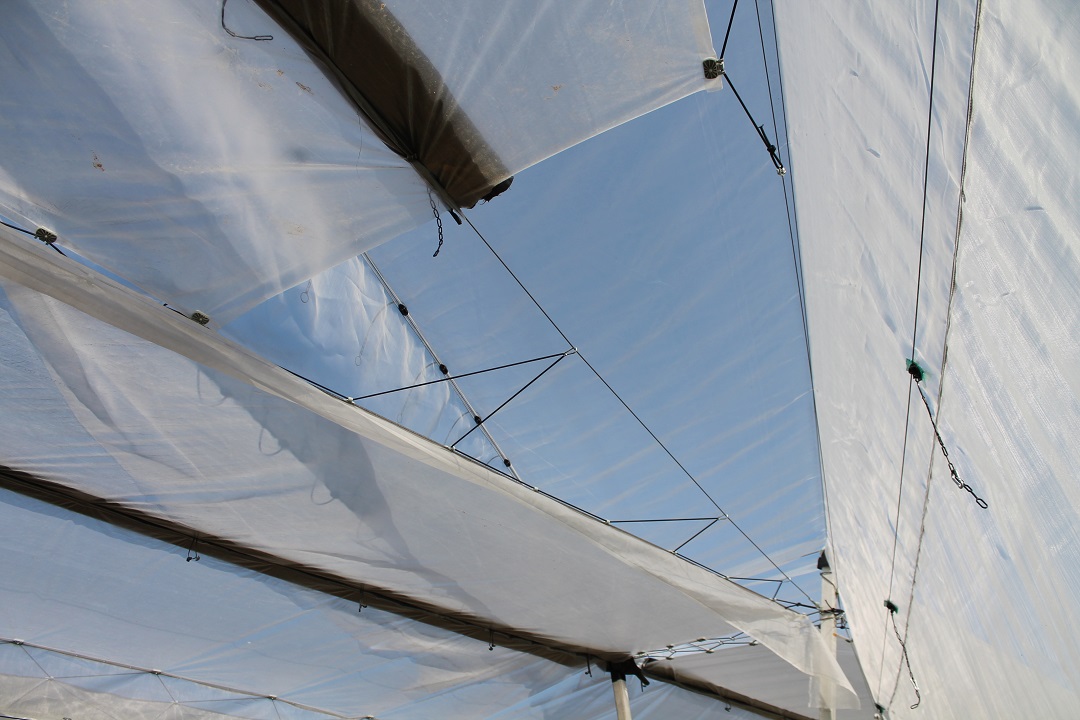 | 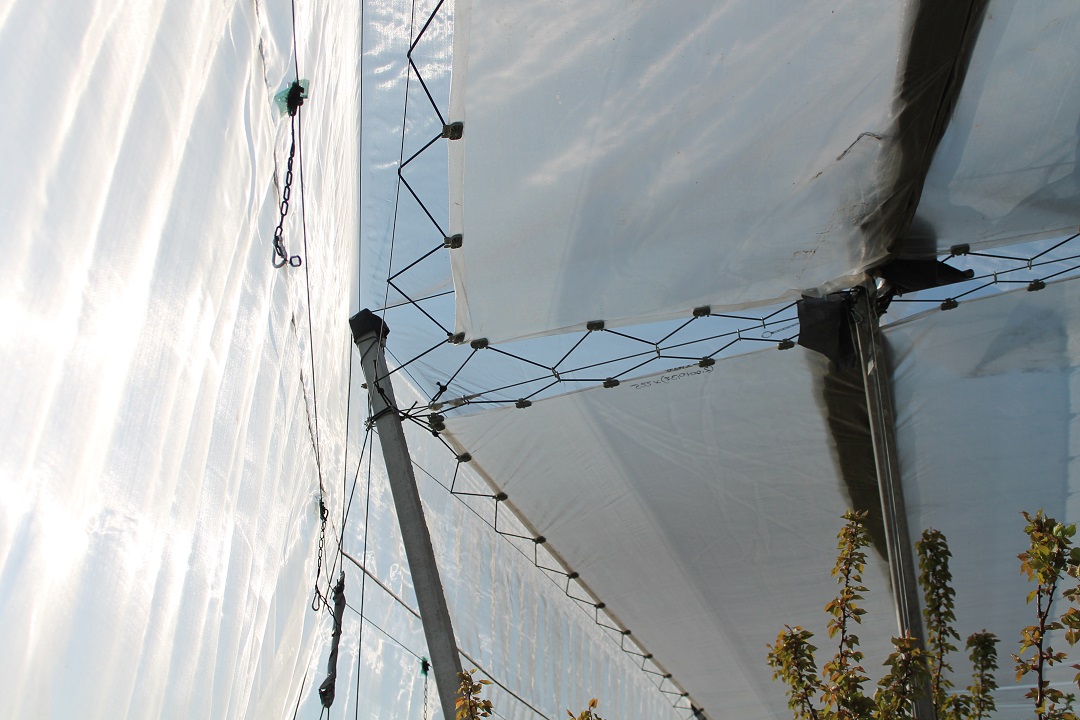 |
| With fine-meshed net closed open areas in foil canopy (© B. Boehnke, JKI Dossenheim) | With fine-meshed net closed open areas in foil canopy (© B. Boehnke, JKI Dossenheim) |
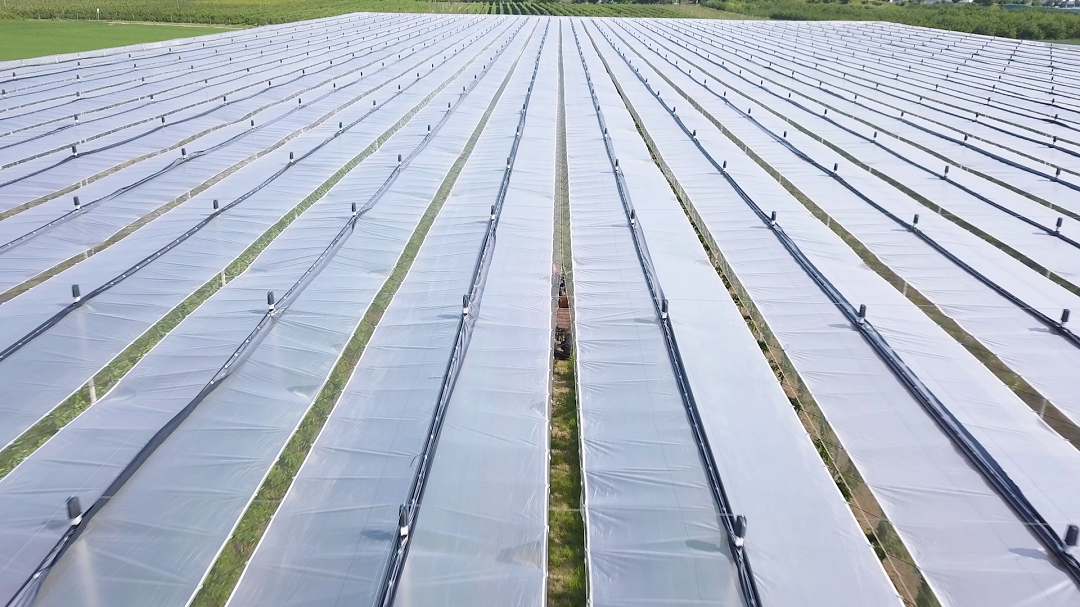 | |
| Closing of eaves of foil canopy with fine-meshed net (© D.-A. Ungan, JKI Dossenheim) | |
5. Correct gapless connection to ground level
It is necessary to ensure a correct gapless connection to the ground level.
Spotted Wing Drosophila is a fruit fly and prefer, especially at warm temperatures, higher humidity at the soil.
It will be recommended a connection to ground level by anchoring the net with wires or bungees, by burying net or by ballasting net with sand bags.
Because of financial reasons, often will be used stones or bricks for ballasting net.
This is not recommended because this can cause damages to the net and Spotted Wing Drosophila can entering the exclusion netting system.
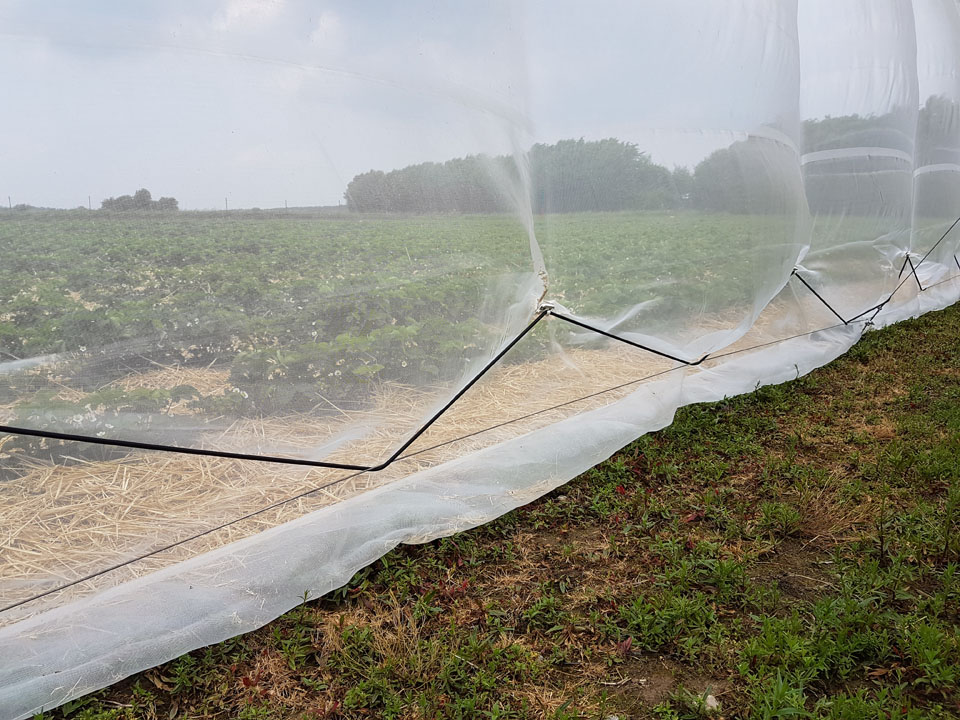 | 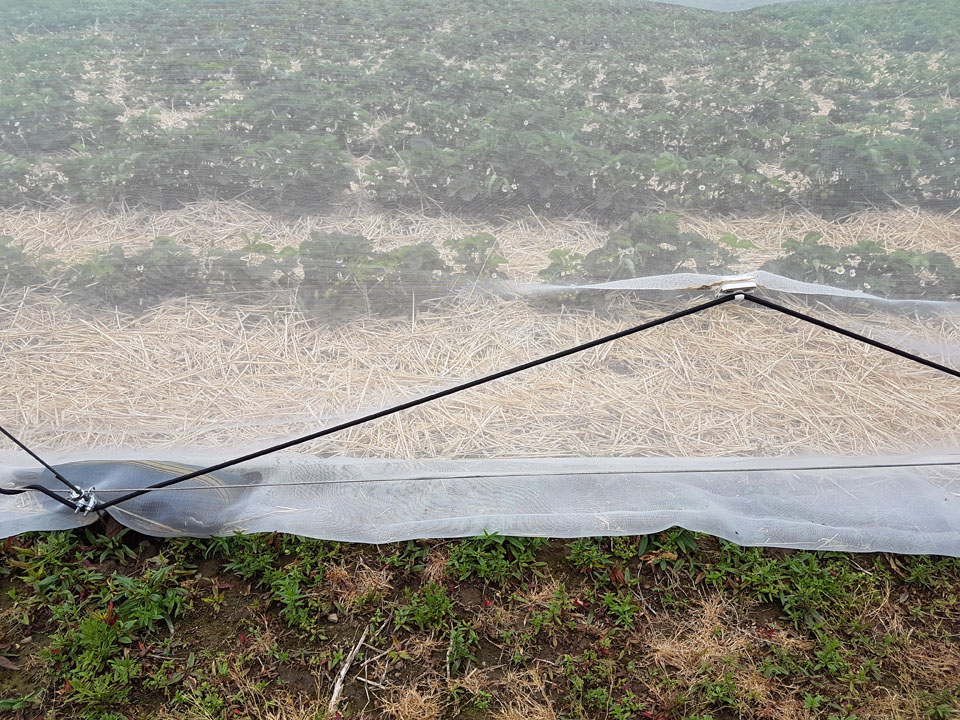 |
| Correct connection to the ground level by anchoring the net with bungees on a stretched wire (© J.-H. Wiebusch, LWK Lower Saxony) | Correct connection to the ground level by anchoring the net with bungees on a stretched wire (© J.-H. Wiebusch, LWK Lower Saxony) |
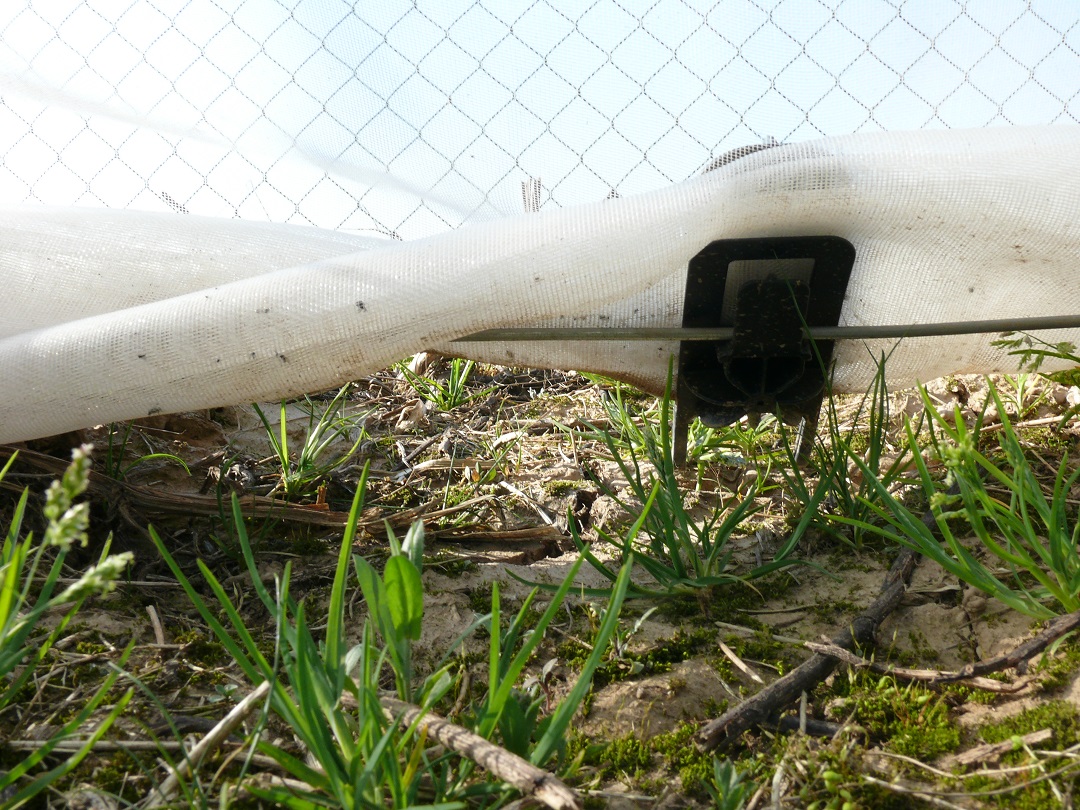 | 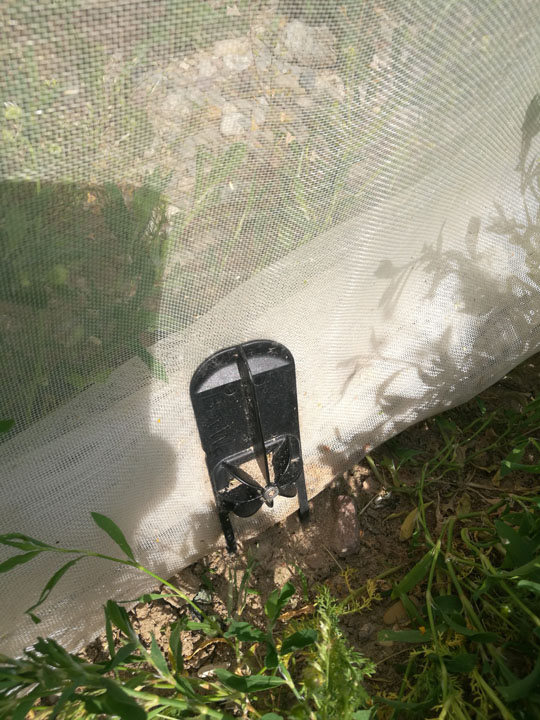 |
| Connection to the ground level by fixing net with clamps/ brackets on a streched wire (© B. Boehnke, JKI Dossen-heim) | Connection to the ground level by fixing net with
clamps/ brackets on a streched wire (© C. Augel,
LTZ Augustenberg) |
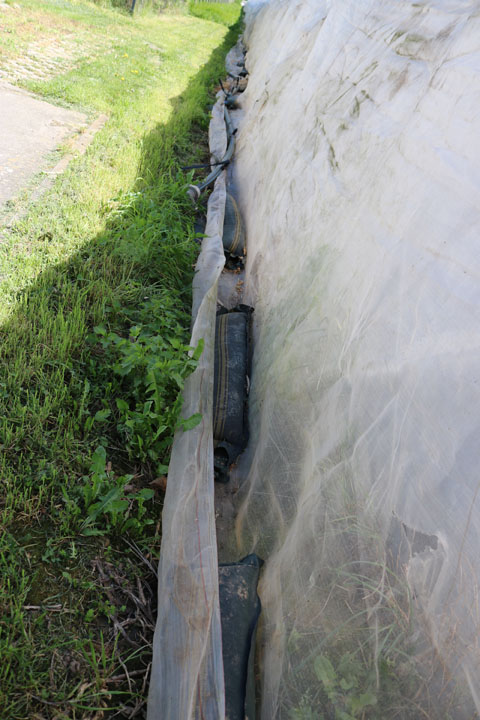 | 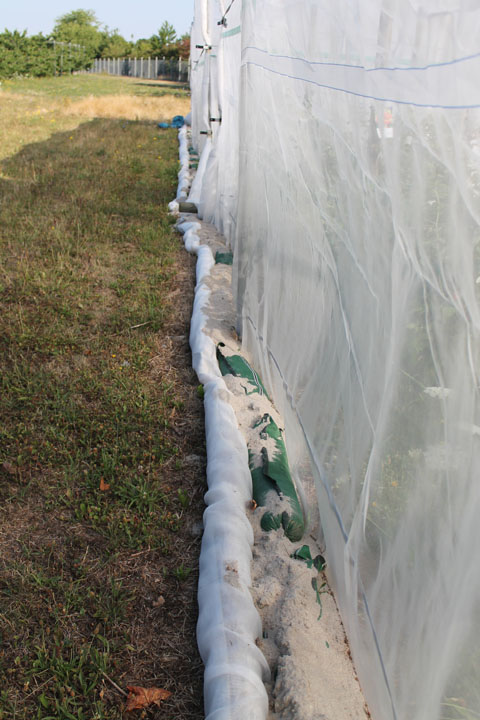 |
| Ballasting the overlapping net on ground level with sand bags (© B. Boehnke, JKI Dossenheim) | Rolling up overlapping net in wooden beams and ballasting the net on ground level with sand bags and sand (© B. Boehnke, JKI Dossenheim) |
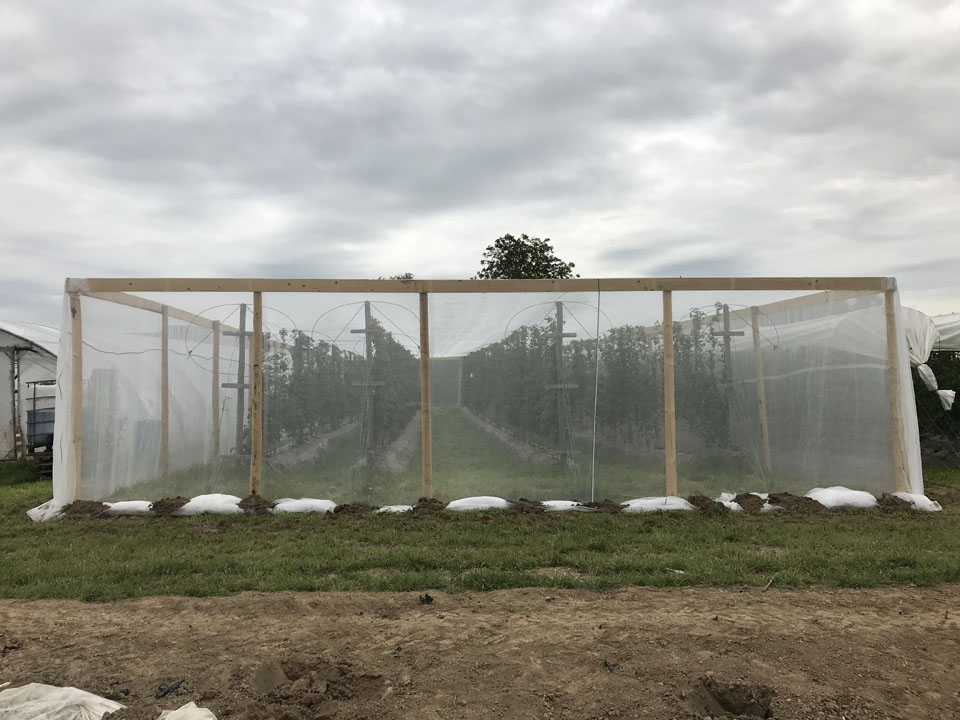 | 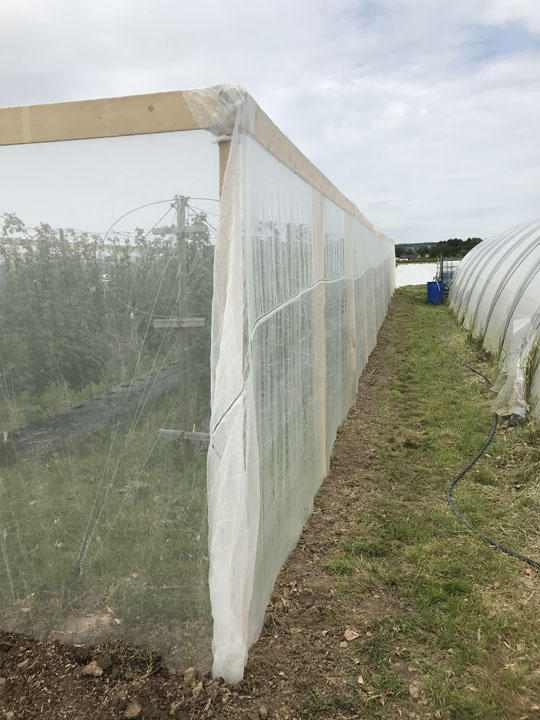 |
| Connection to the ground level by ballasting net with soil (© S. Benz, LWK NRW) | Connection to the ground level by burying
overlapping net (© S. Benz, LWK NRW) |
6. Avoid chafe marks
The net is not allowed to chafe on construction of foiltunnel / foil canopy (ropes, clamps, posts, linkage). To protect the net, such areas have to be covered with i.e. rubber, cloth or plastic.
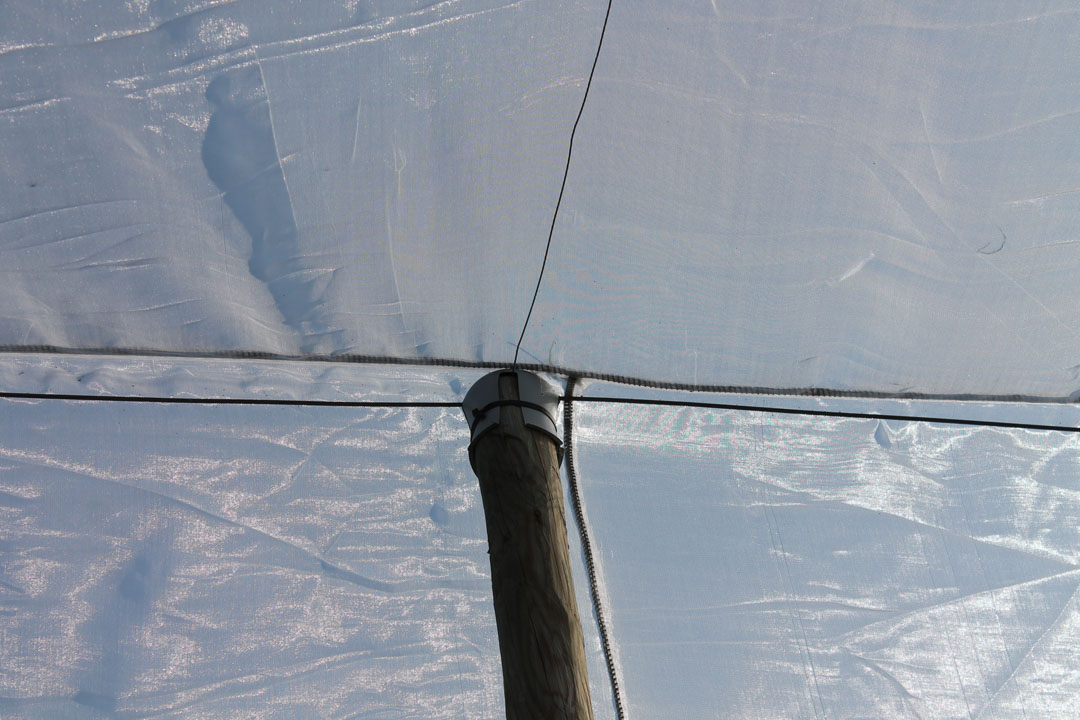 | 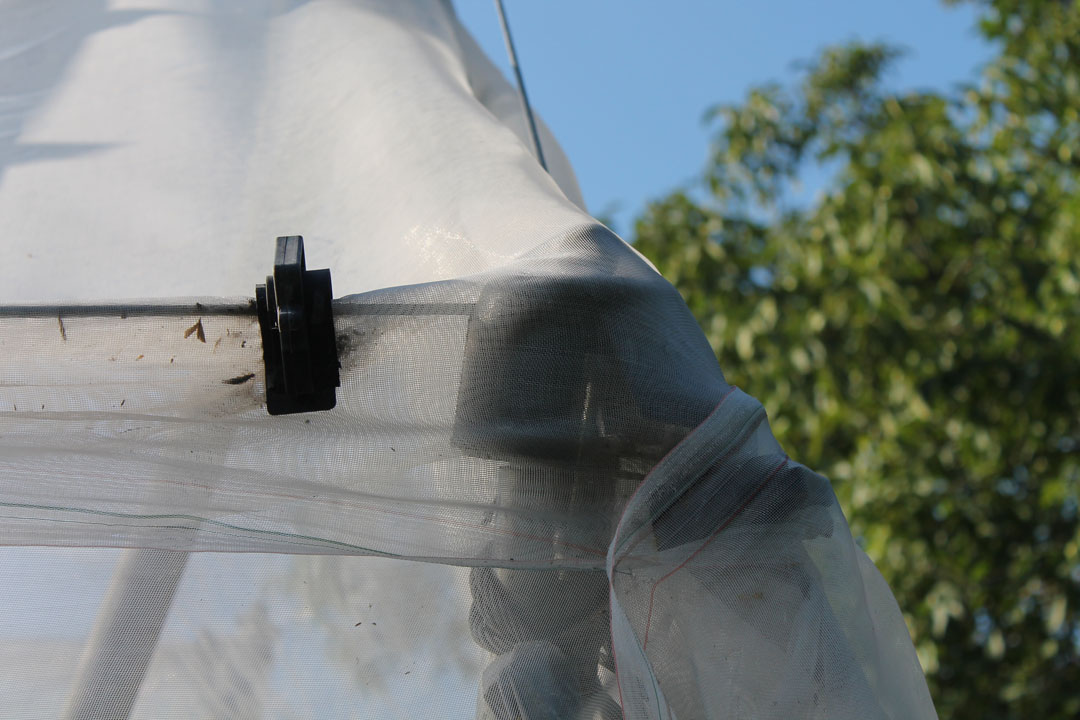 |
Net protection on wooden post by plastic cover
(© B. Boehnke, JKI Dossenheim) | Net protection on wooden post by plastic cover
(© B. Boehnke, JKI Dossenheim) |
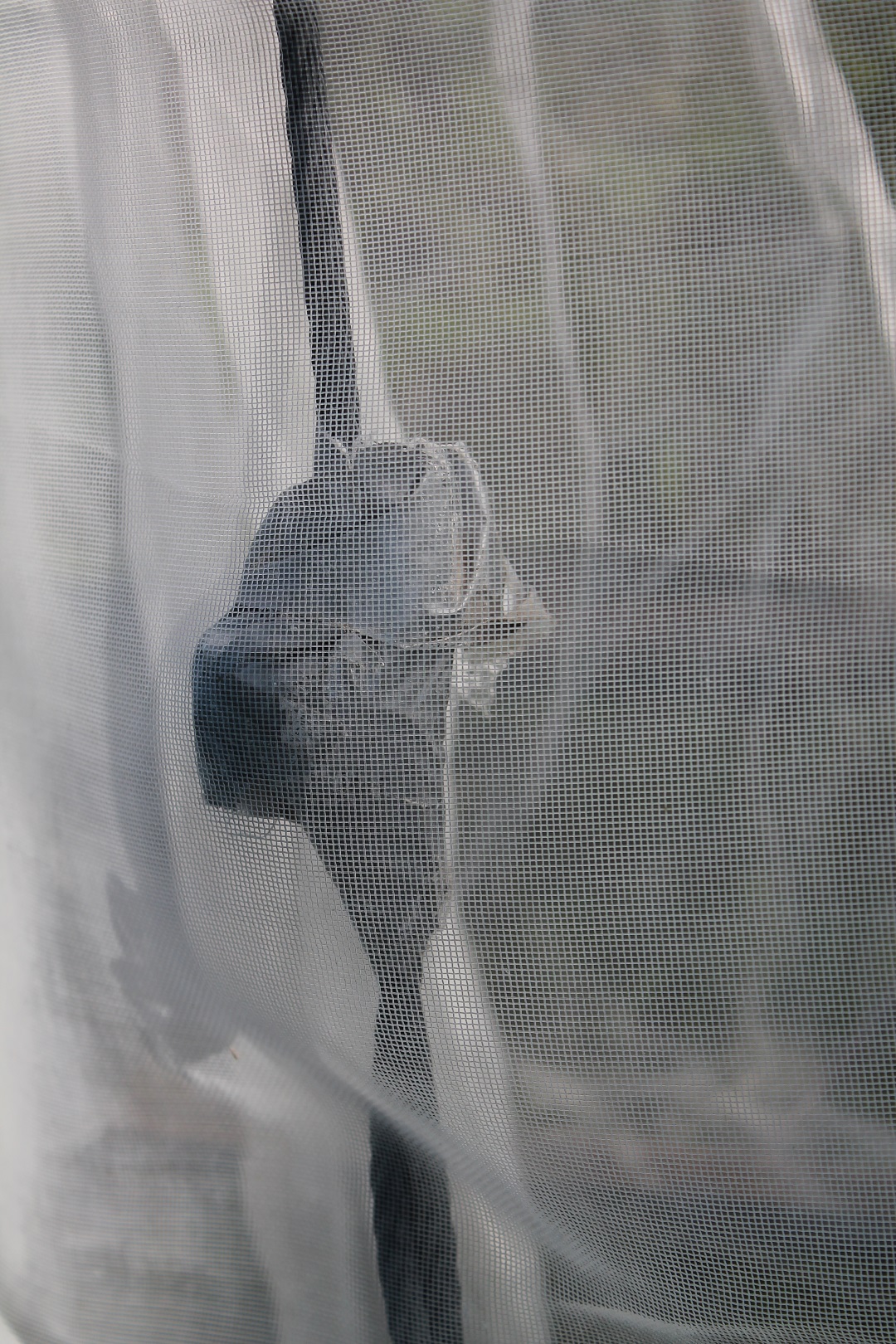 | 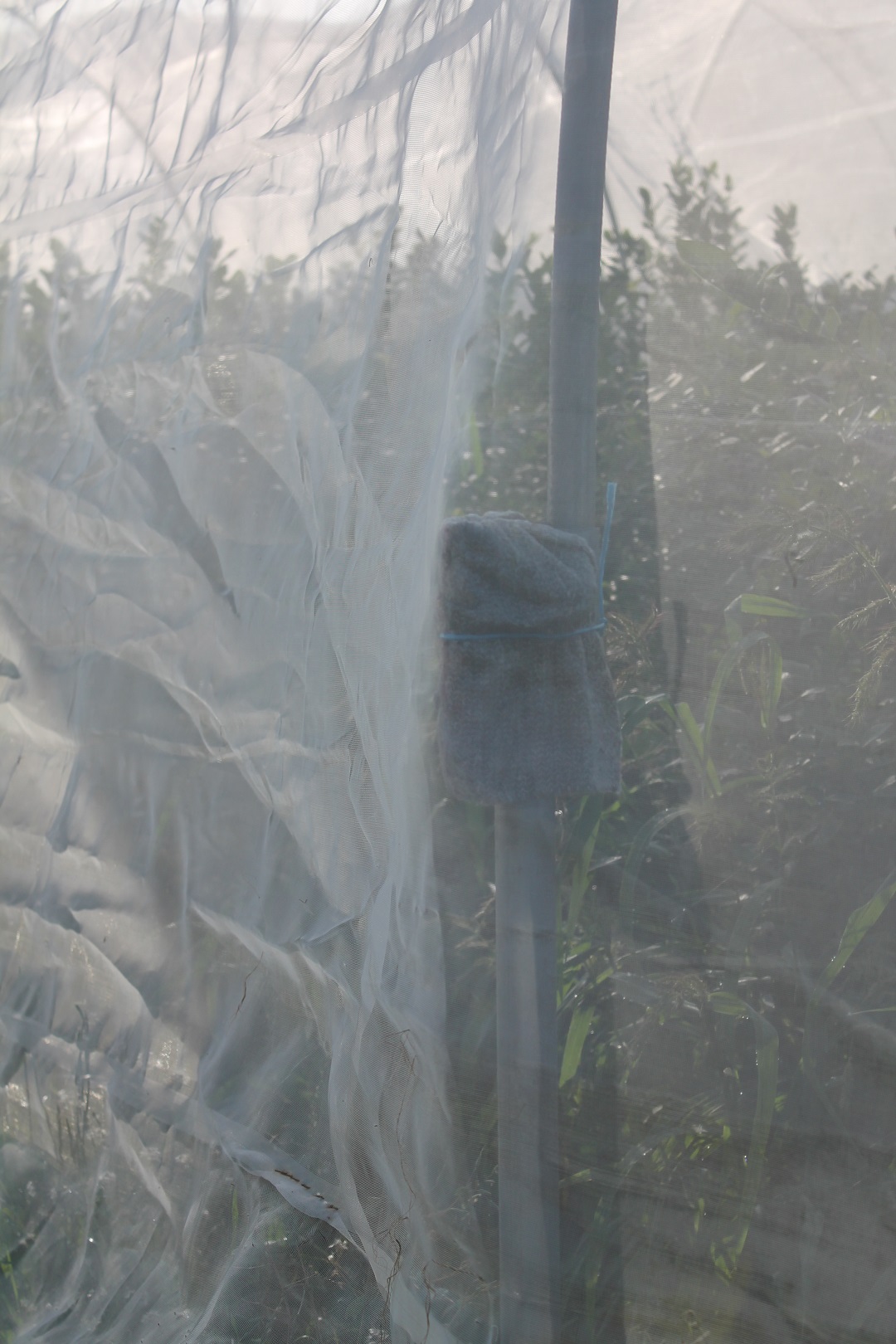 |
Net protection on wire by use of tape
(© B. Boehnke, JKI Dossenheim) | Net protection on tunnel racks by use of cloth
(© B. Boehnke, JKI Dossenheim) |
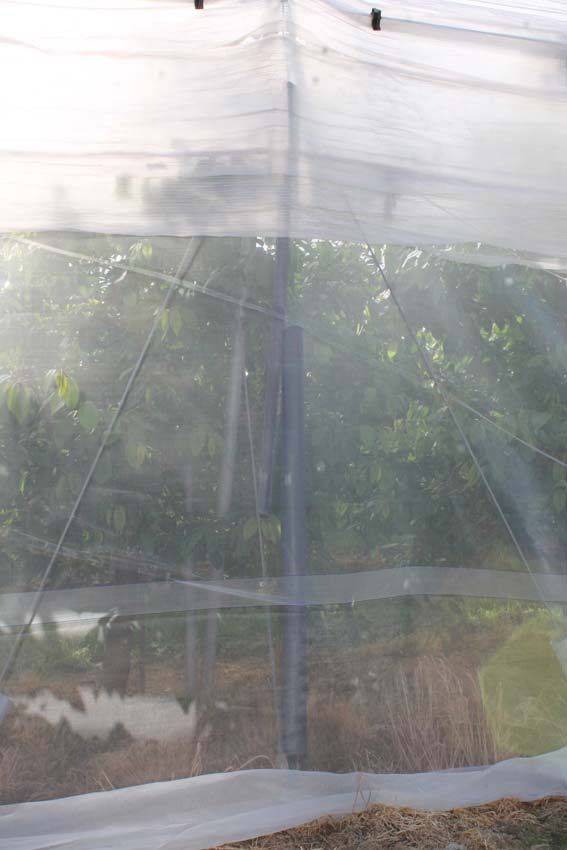 | 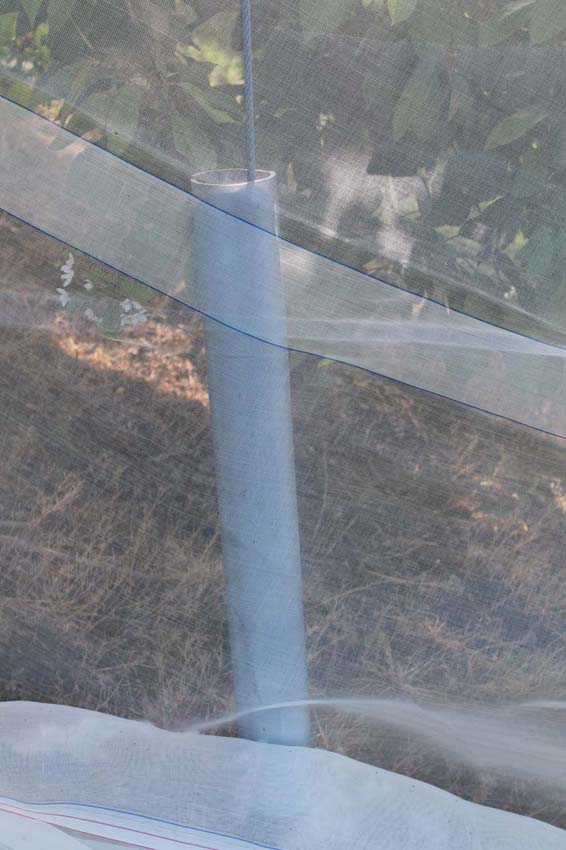 |
Ropes of the construction have to be covered with e.g. plastic tubes to protect the net
(© B. Boehnke, JKI Dossenheim) |
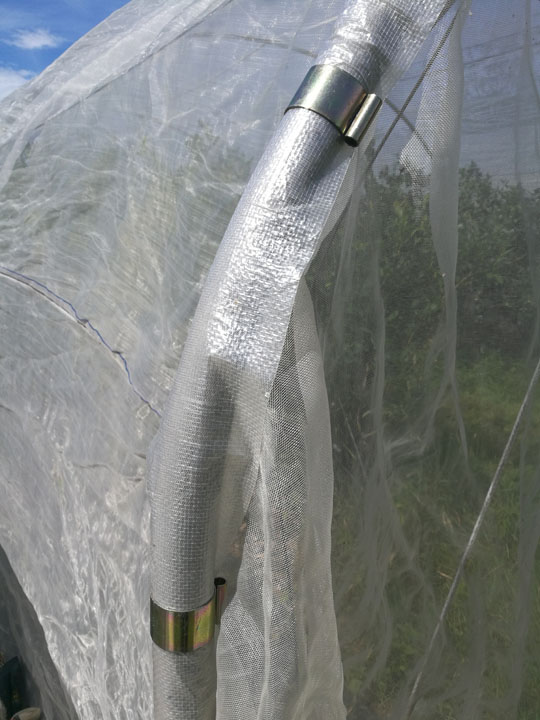 | |
Connection of net by clamps and additional plastic cover between net and clamps to protect the net
(© B. Boehnke, JKI Dossenheim) | |
7. No too taut stretched nets.
The nets are not allowed to be stretched too taut in order that the net don´t rupture during strong wind. The nets needs leeway to move.
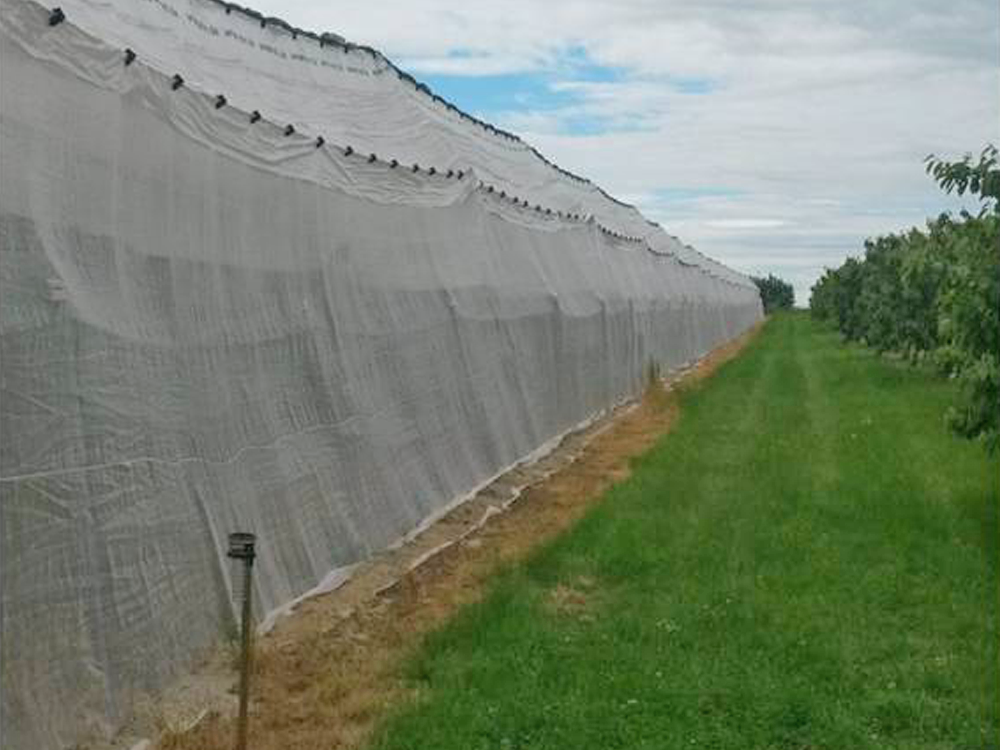 | 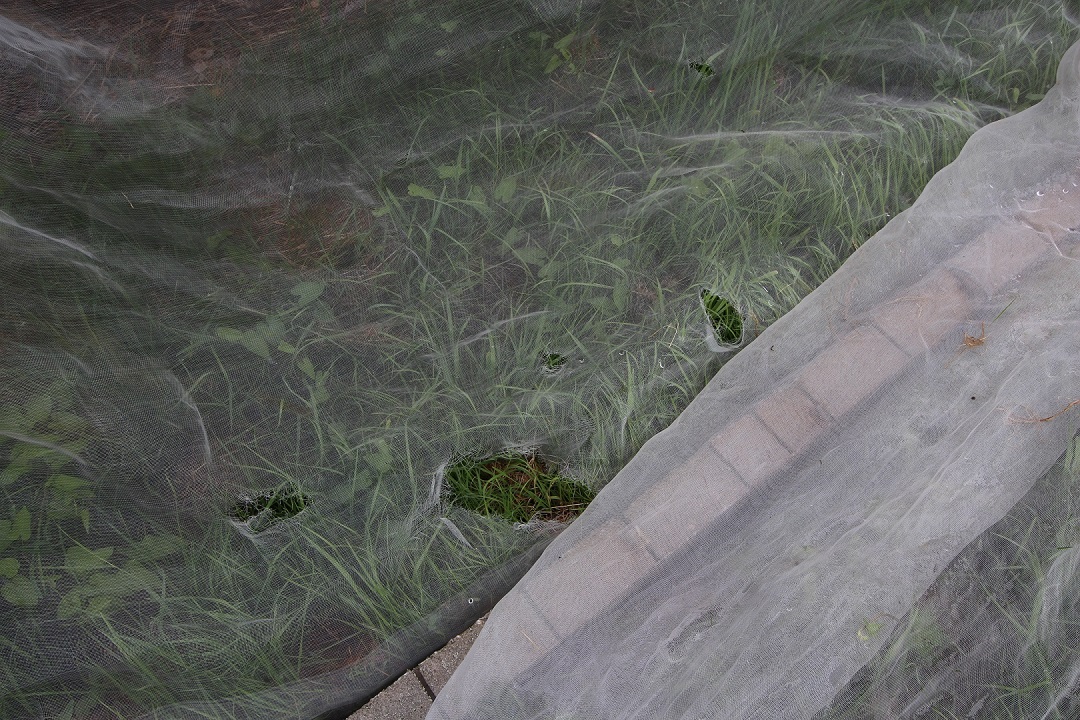 |
Tautly stretched nets lead to high wind susceptibility
(© B. Dinkhoff, LWK NRW) | Tautly stretched nets and the use of stones for ballasting net at the ground level can cause fast damages (© C. Augel, LTZ Augustenberg) |
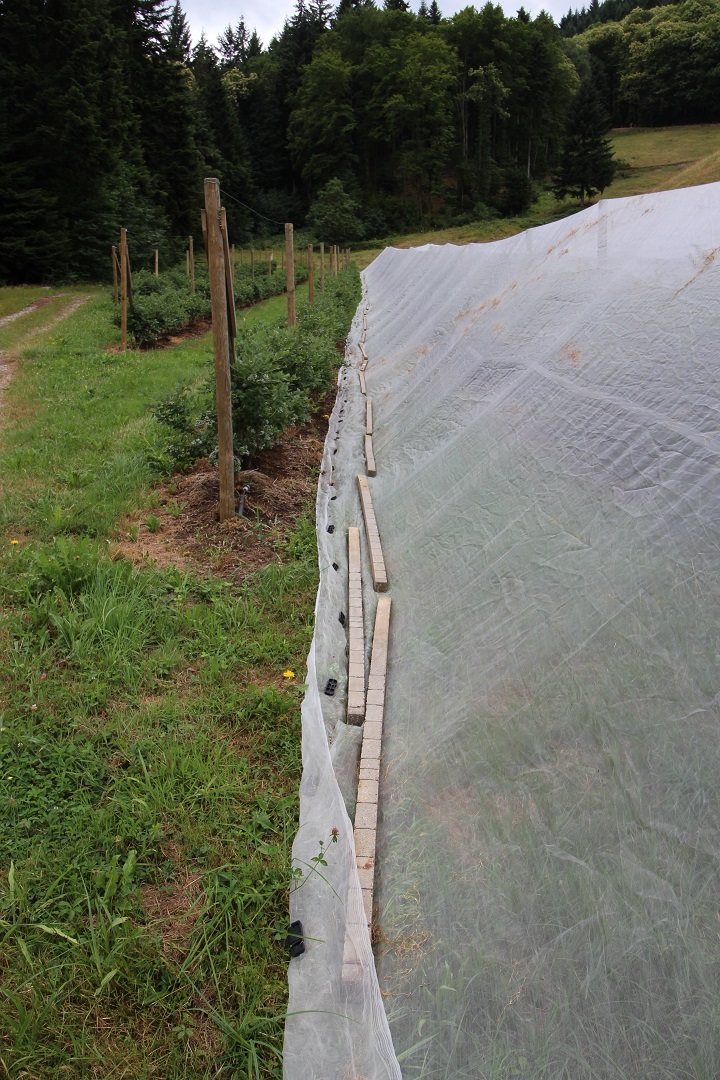 | |
| Tautly stretched nets and the use of stones for ballasting net at the ground level can quickly lead to damage (© C. Augel, LTZ Augustenberg) | |
8. Readily accessible entrance
The entrance have to be opened and closed quickly.
After entering the exclusion netting system, the nets have to be closed immediatelly otherwise
Spotted Wing Drosophila can entering the system.
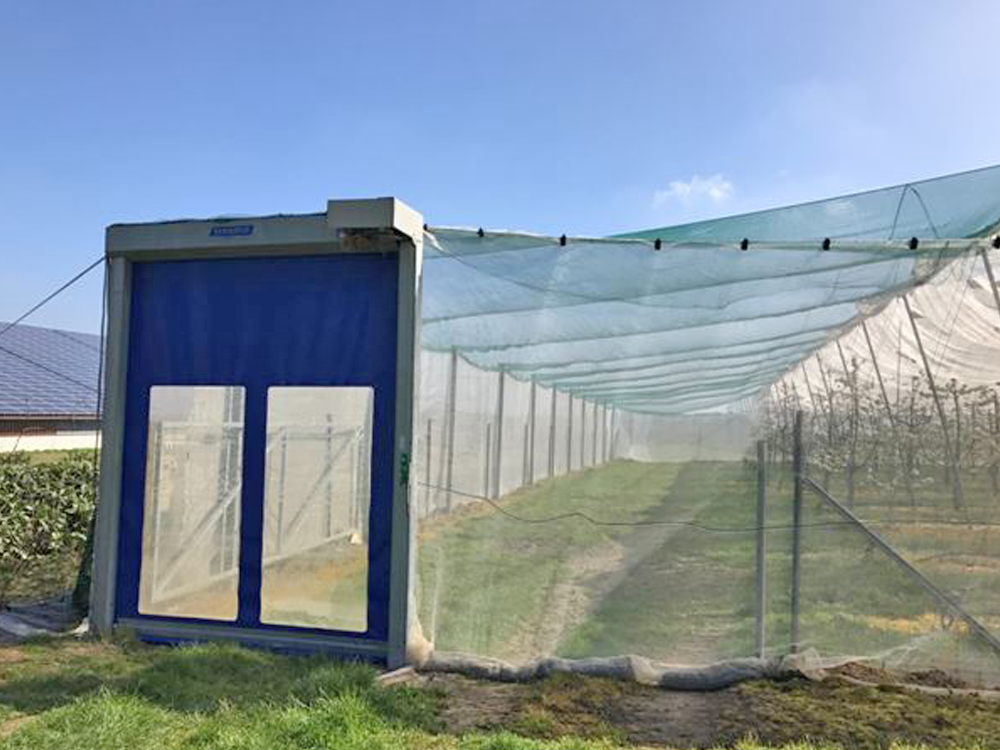 | 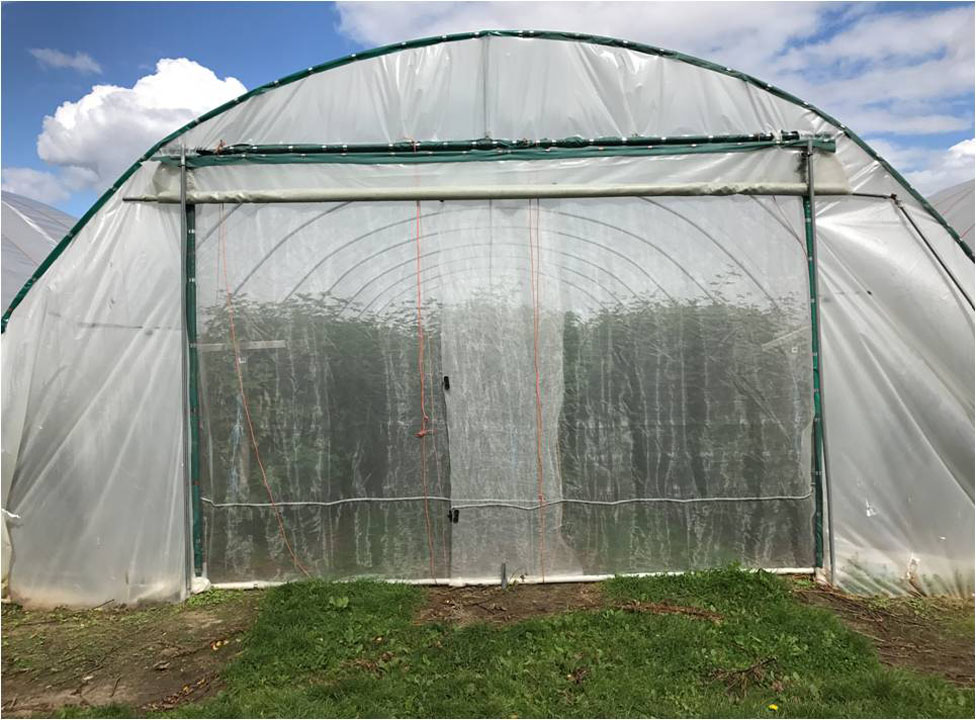 |
| Electrically operated gate of a lateral netted foil canopy with netted headland (cherries) (© S. Benz, LWK NRW) | Foil tunnel with overlapping nets in the entrance area
(© S. Benz, LWK NRW) |
9. Exclusion netting of headland
In big systems, which have to be entered by machines for cultivation measures, should be netted the headland.
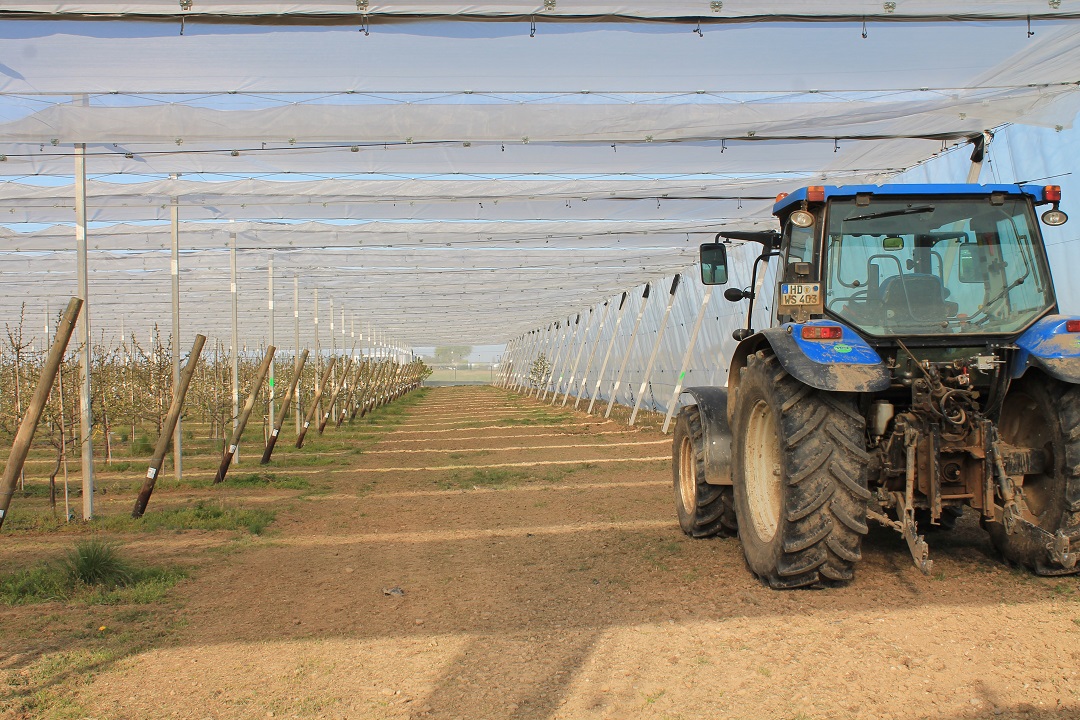 | 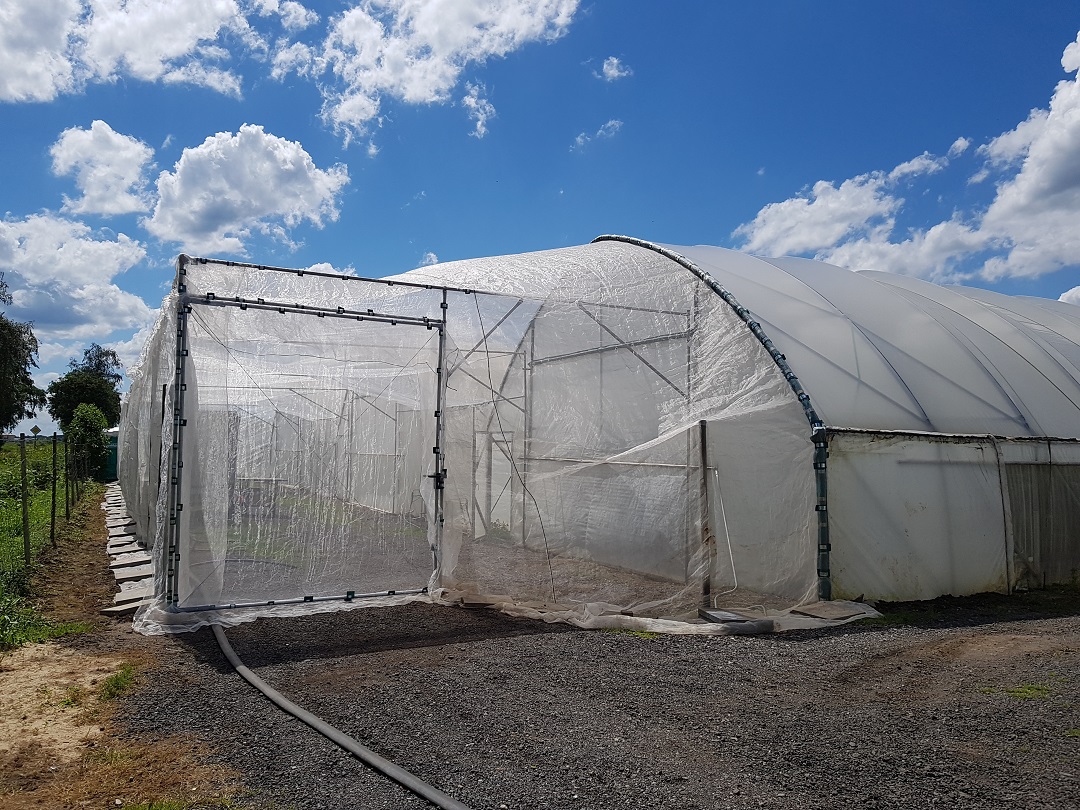 |
| Interior view of canopied and netted headland of a modern commercial foil exclusion netting system of cherries (© B. Boehnke, JKI Dossenheim) | Netted headland with addition lock function of a modern foil tunnel (© K. Kramer, OVR) |
10. The net must not have contact to the fruits
Risk: If net have contact with fruits, the Spotted Wing Drosophila is able to lay the eggs through
the meshes into fruit.
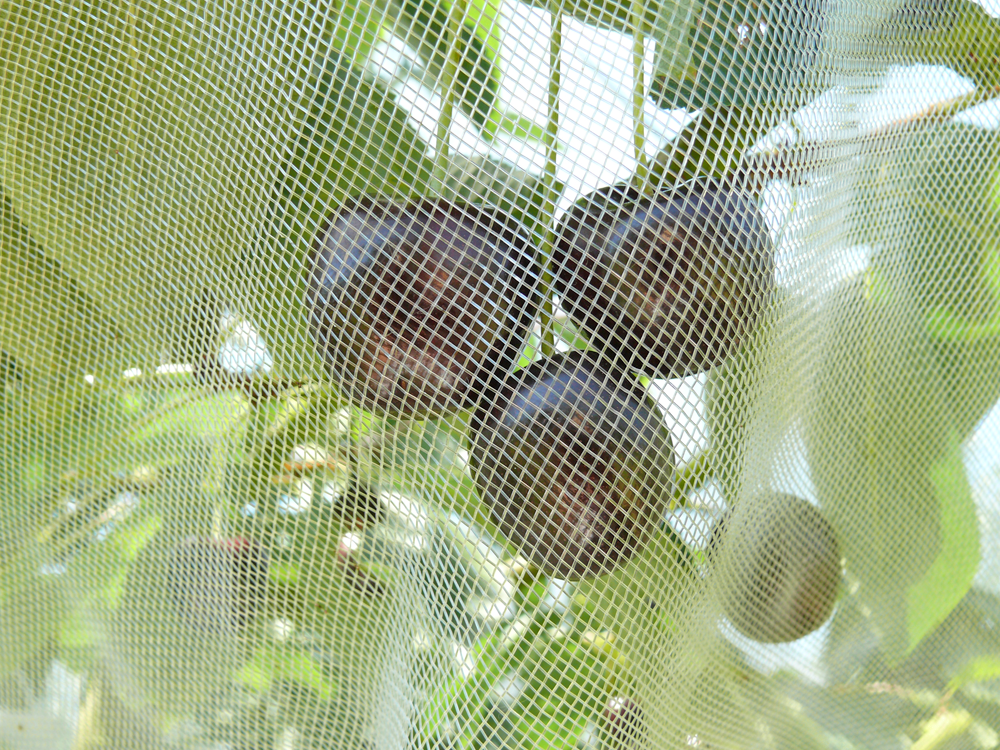 | 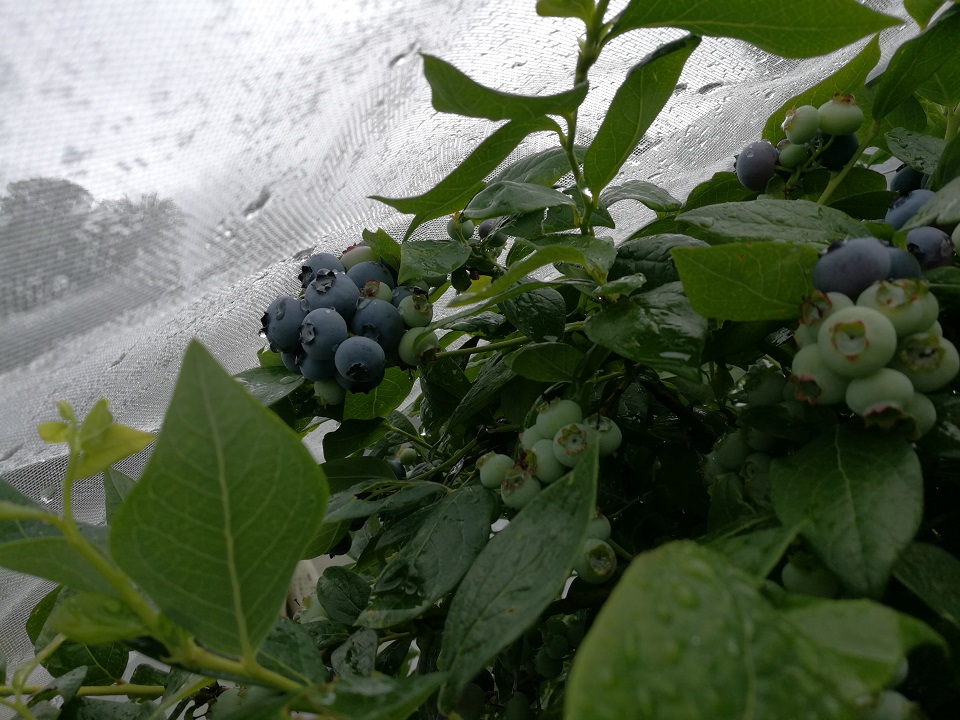 |
Directly to the net adjoining cherries
(© H. Vogt, JKI Dossenheim) | Directly to the net adjoining blueberries
(© C. Augel. LTZ Augustenberg) |
 | 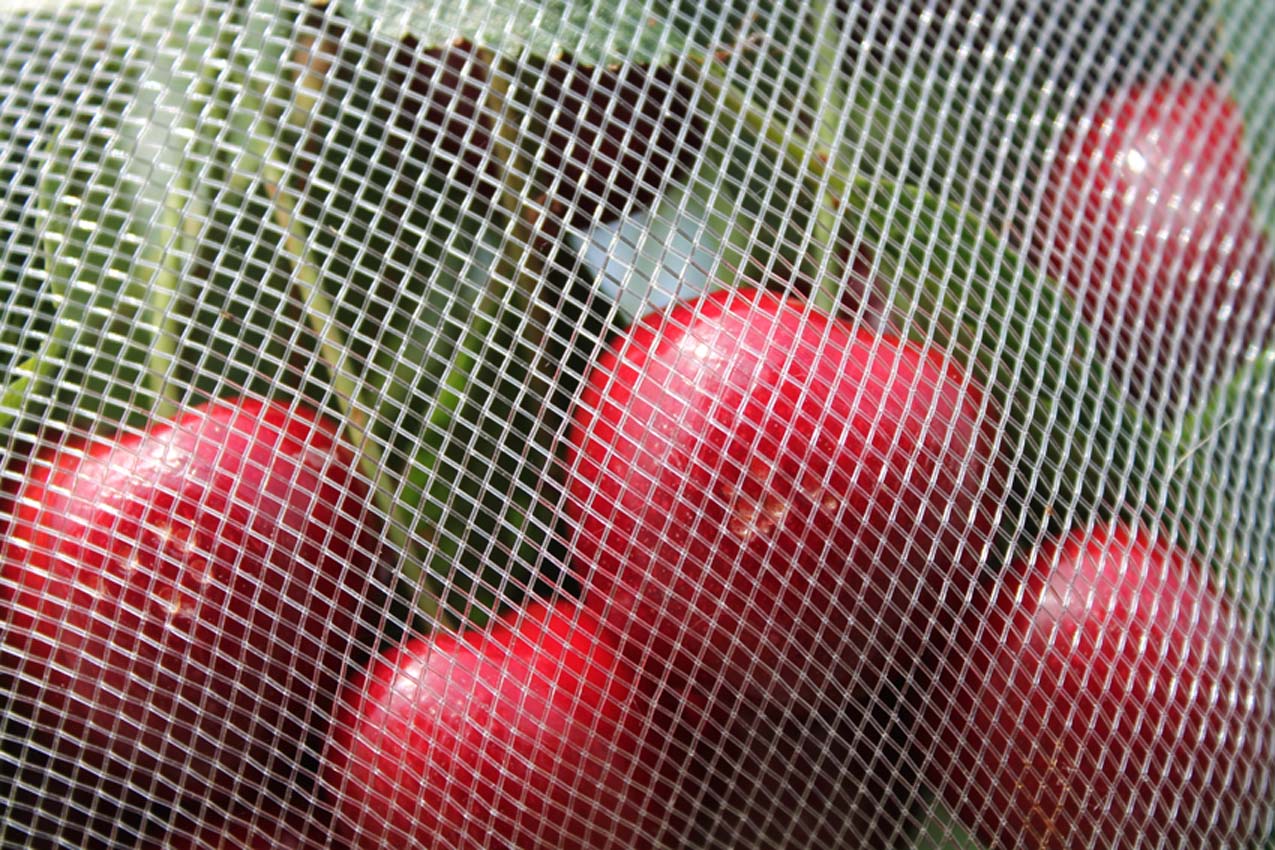 |
Great danger of oviposition of Spotted Wing Drosophila through the net into the adjoining cherries
(© P. Burger, JKI Dossenheim) | Directly to the net adjoining cherries with additional damage by further insects (© B. Boehnke, JKI Dossenheim) |
11. Regular control of nets to damages/ open net areas
Regular monitoring of net, especially after storm and strong rain, is recommended.
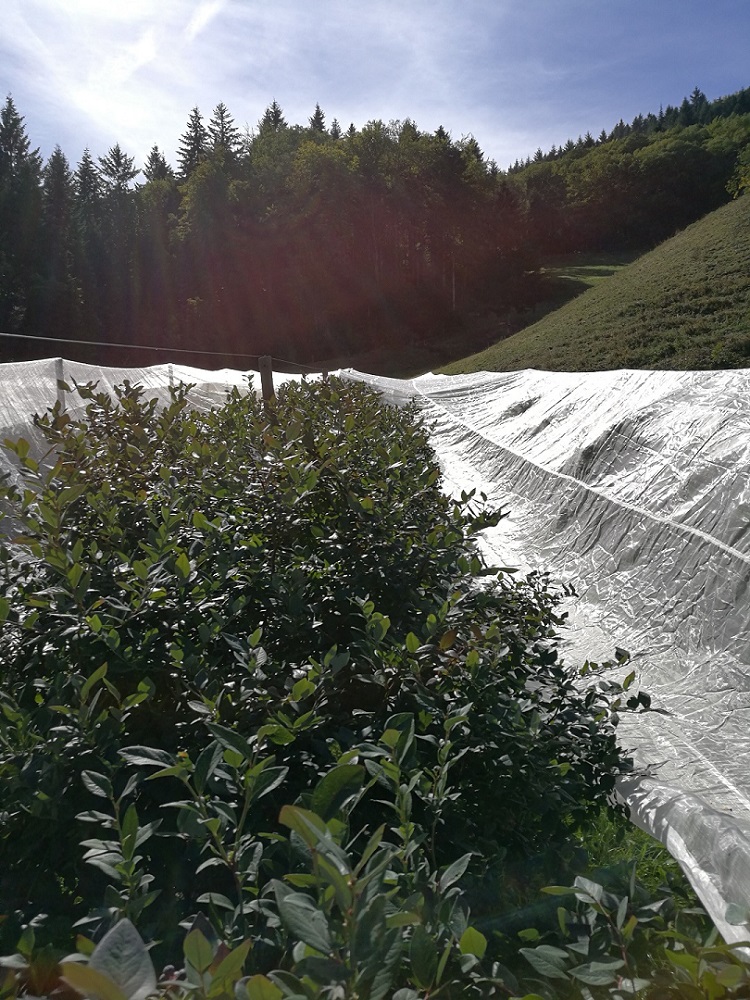 | 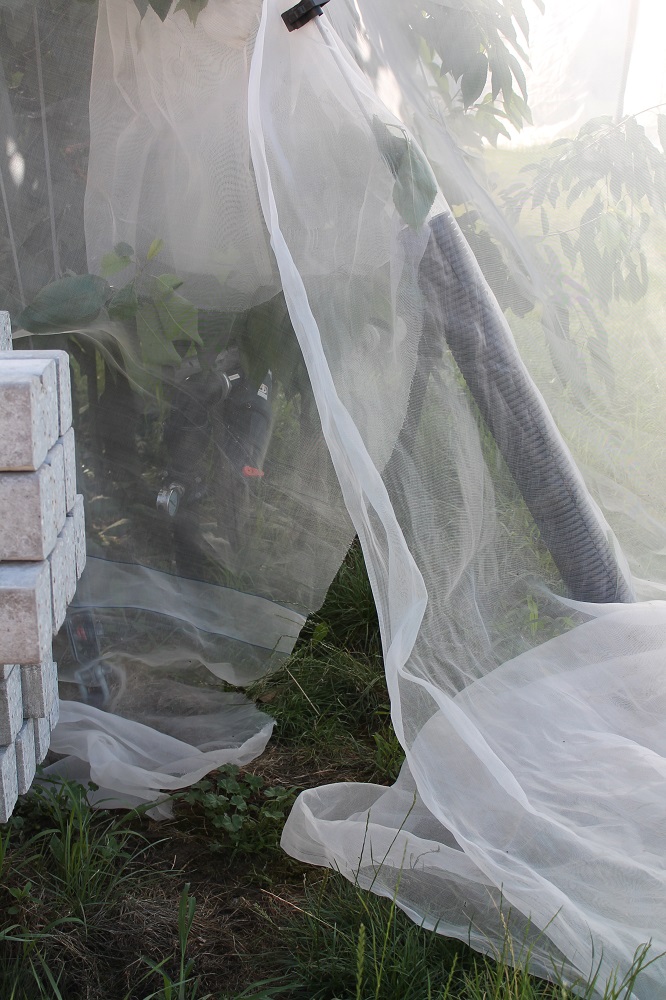 |
| Opened clamps and opened net in an exclusion netting system of blueberries after storm (© C. Augel, LTZ Augustenberg) | Open gaps at opverlapping nets at groubnd level
(© B. Boehnke, JKI Dossenheim) |
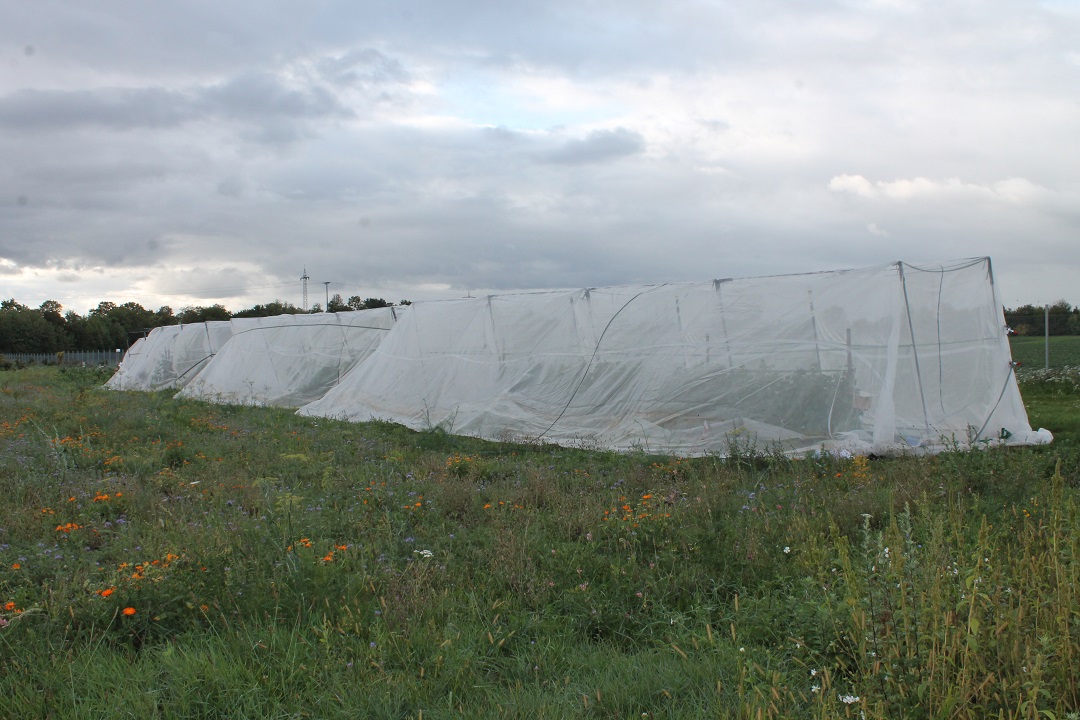 | |
Opened connection to ground level after storm
(© B. Boehnke, JKI Dossenheim) | |
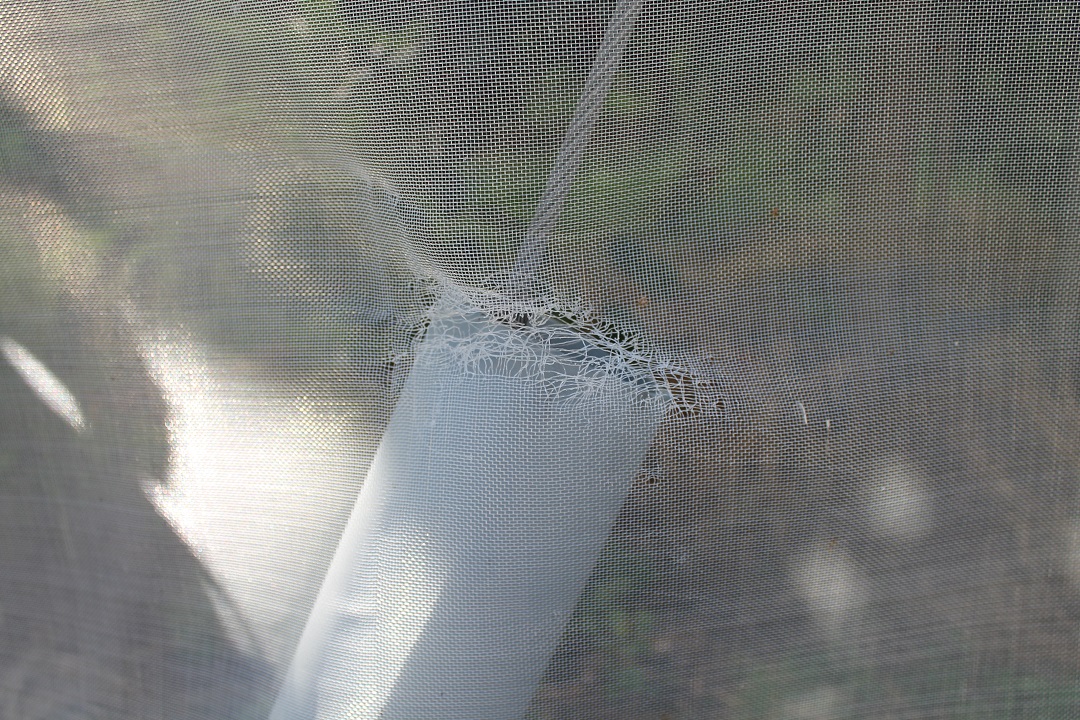 | 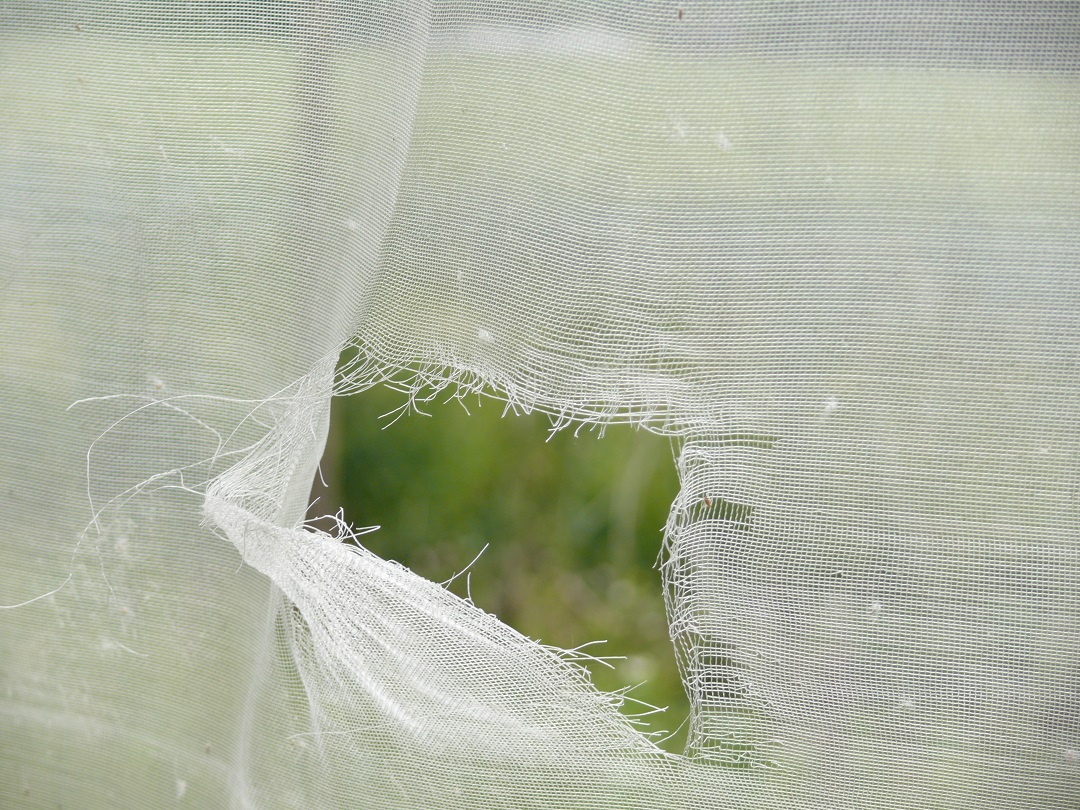 |
Damages on net caused by cafing on construction
(© B. Boehnke, JKI Dossenheim) | Damages an net (© H. Vogt, JKI Dossenheim) |
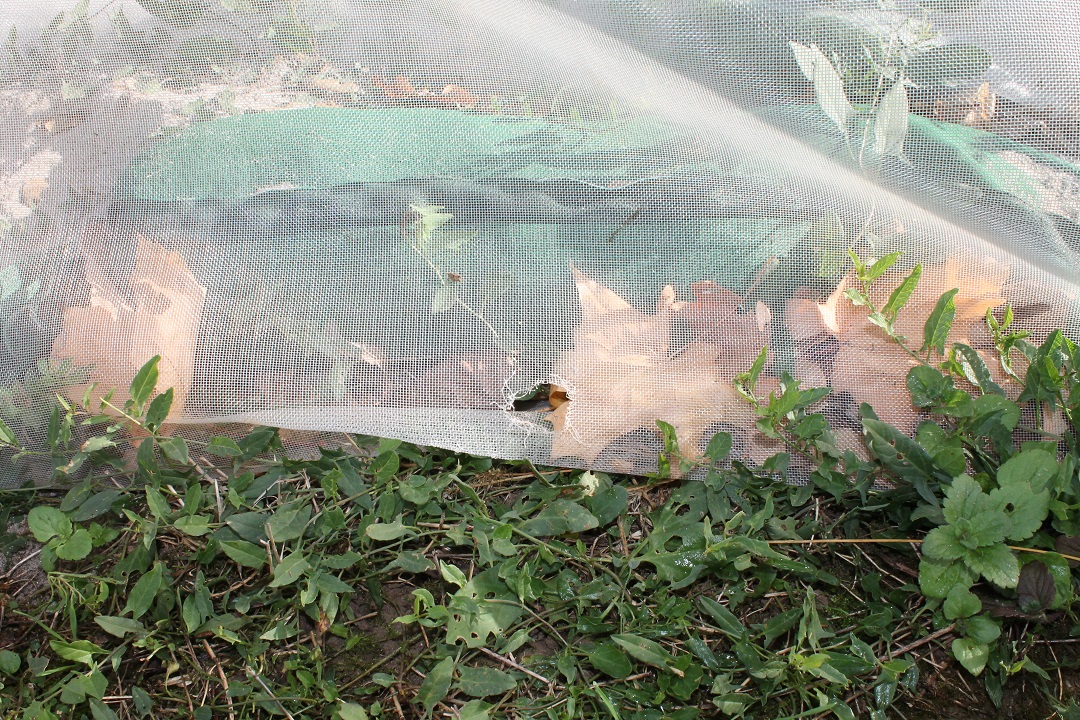 | 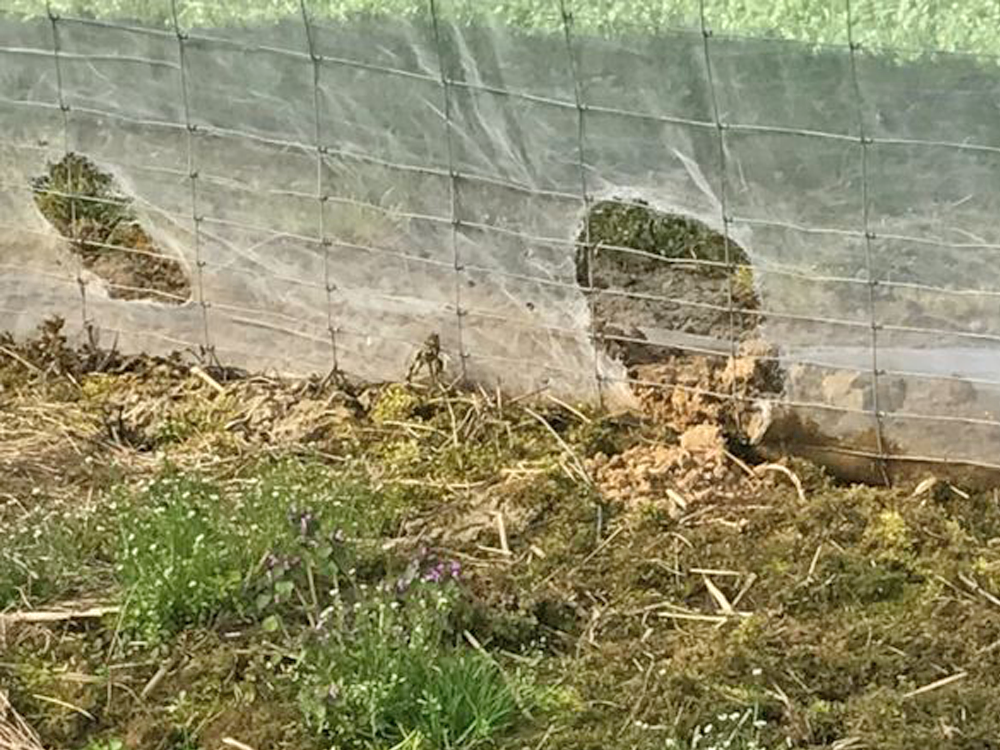 |
Damages on ground level of net caused by mices
(© B. Boehnke, JKI Dossenheim) | Damages on ground level of net caused by animals
(© S. Benz, LWK NRW) |
12. Regular control of the net on the ground level to damages by weed growth
To avoid damages caused by weed growth, the net on the ground level have to be controlled regularly and strong weed growth have to be removed.
To reduce weed grwoth can be used woven plastic fabric.
 |  |
| Net damages by weed growth on ground level (© C. Fetzer, LLH Hessen & B. Boehnke, JKI Dossenheim) |
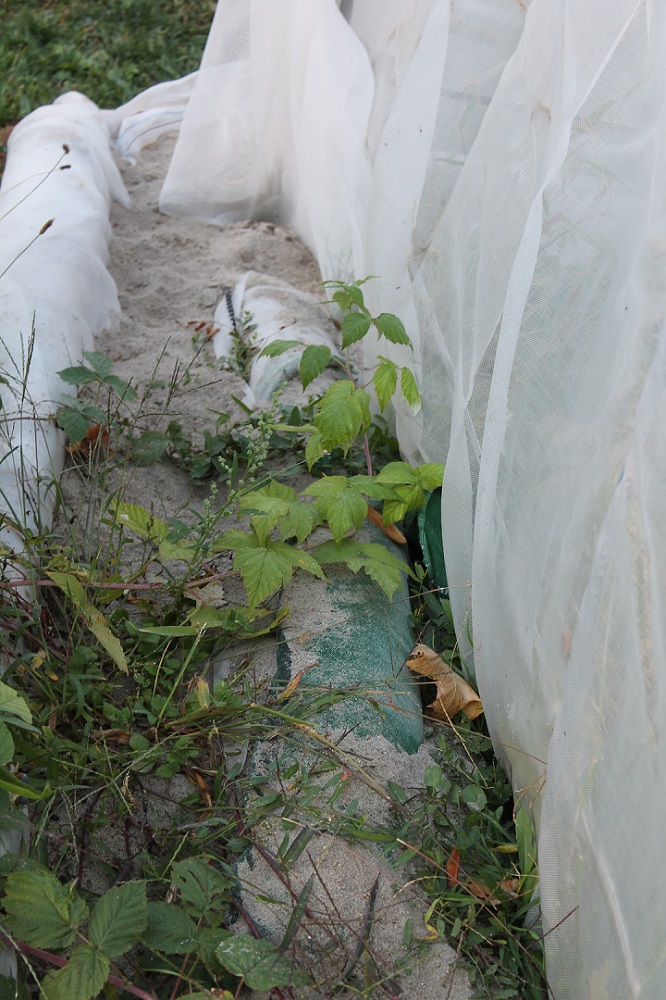 | 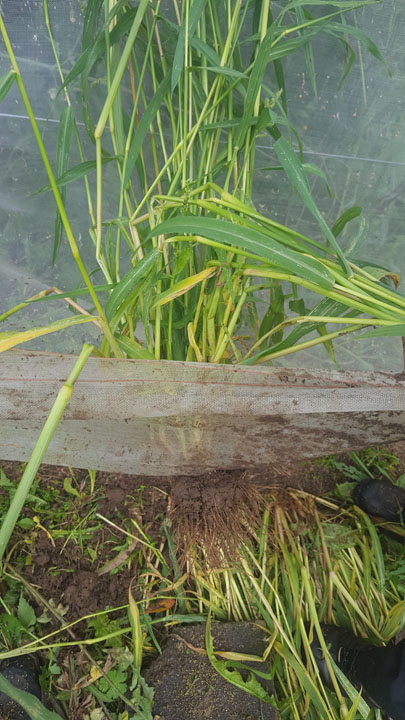 |
| Net damages by weed growth on ground level (© B. Boehnke, & C. Fetzer, LLH Hessen) |
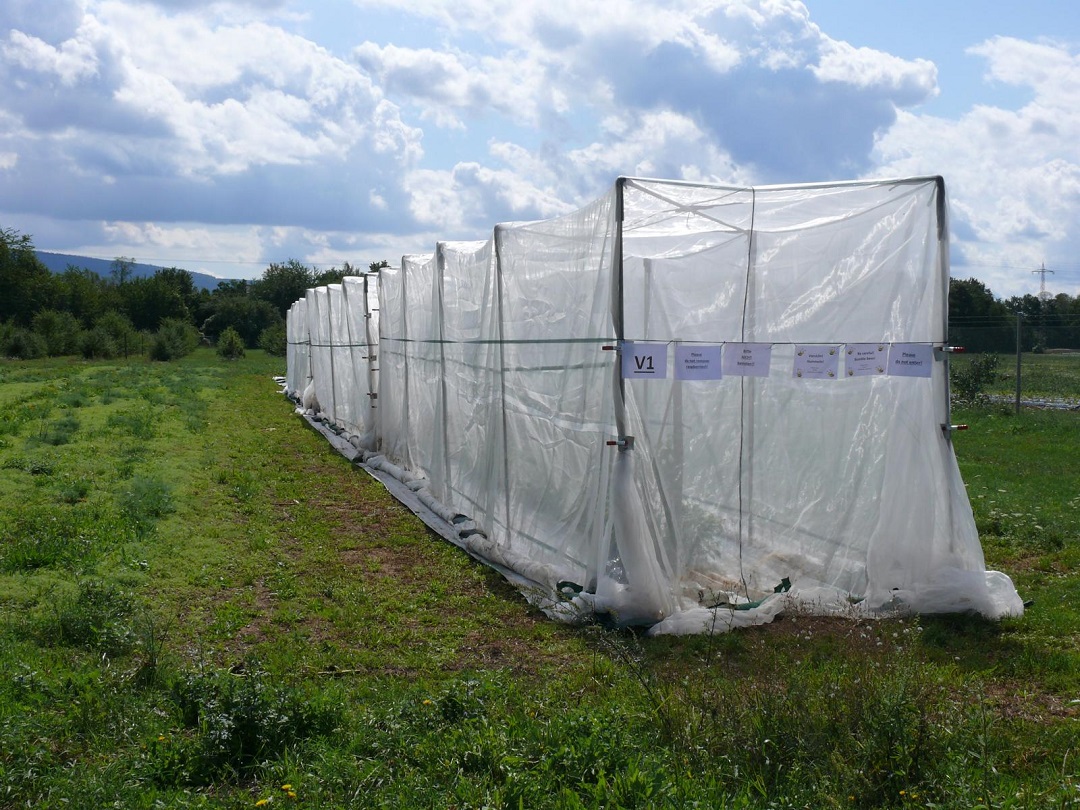 | 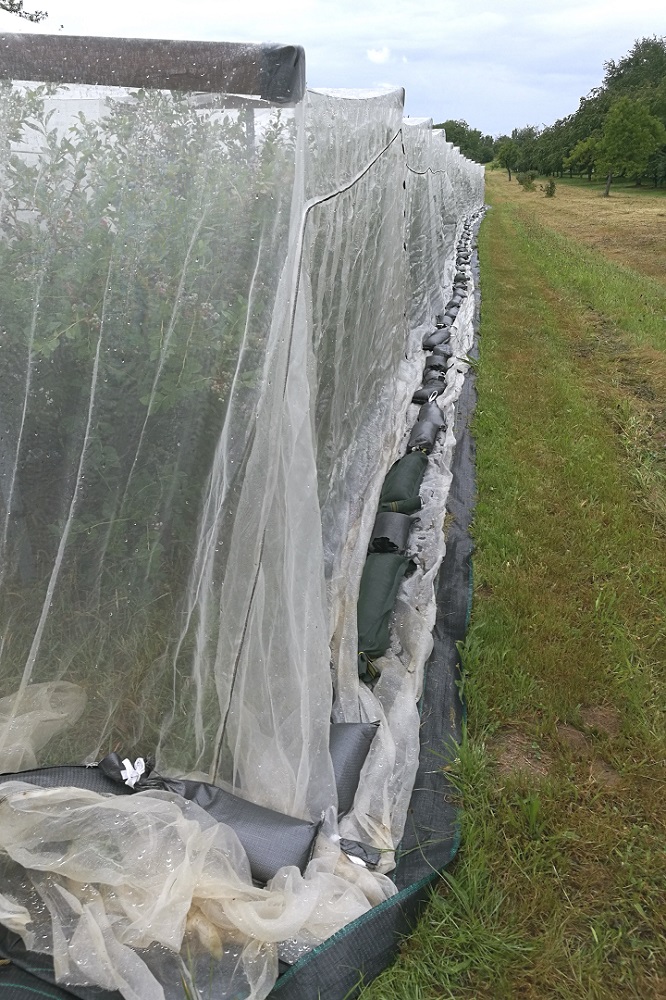 |
Underlaid plastic fabric to protect the net to weed growth (© B. Boehnke, JKI Dossenheim &
C. Augel, LTZ Augustenberg) |
This article is already 1 Once seen.












































































